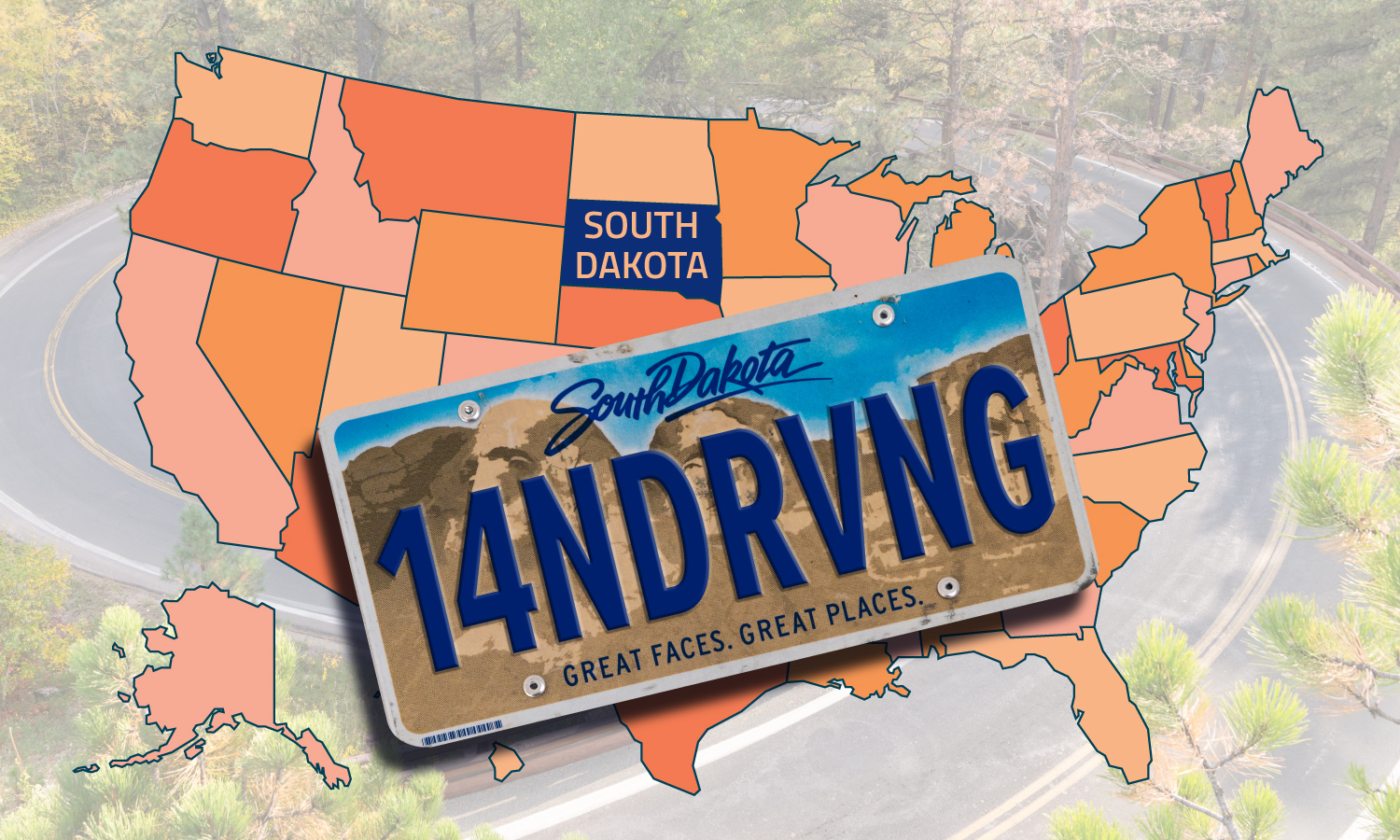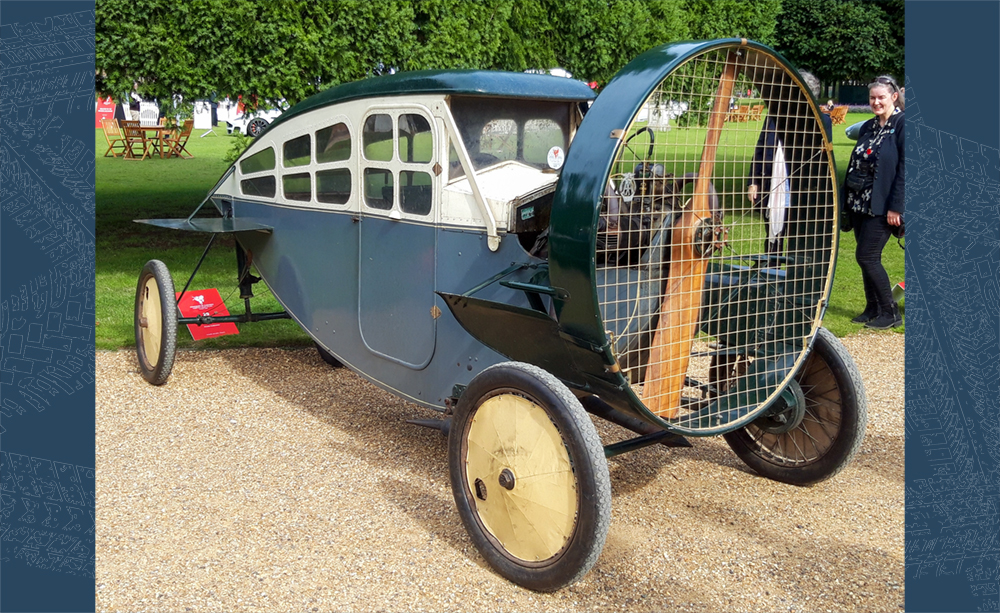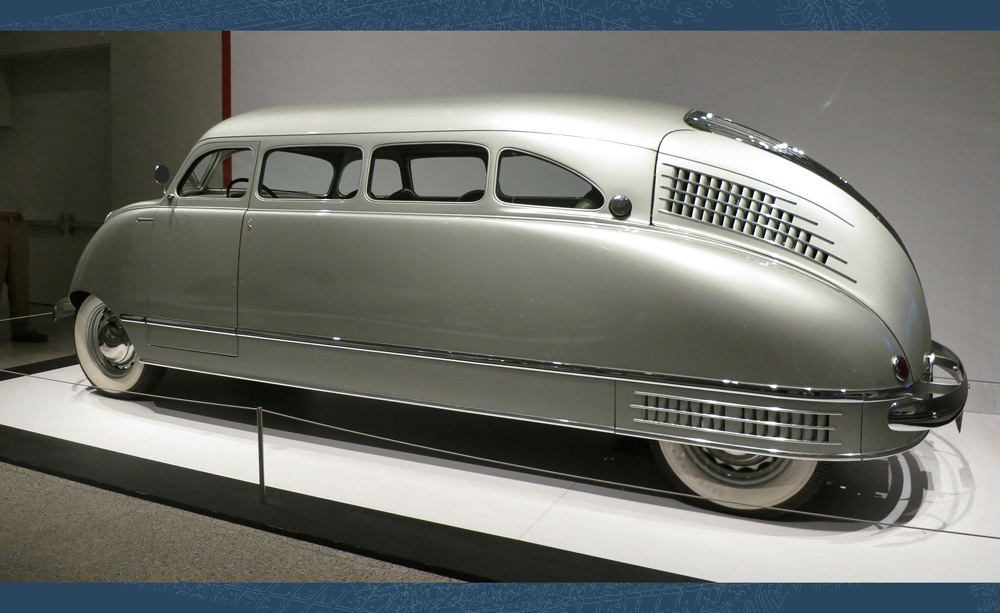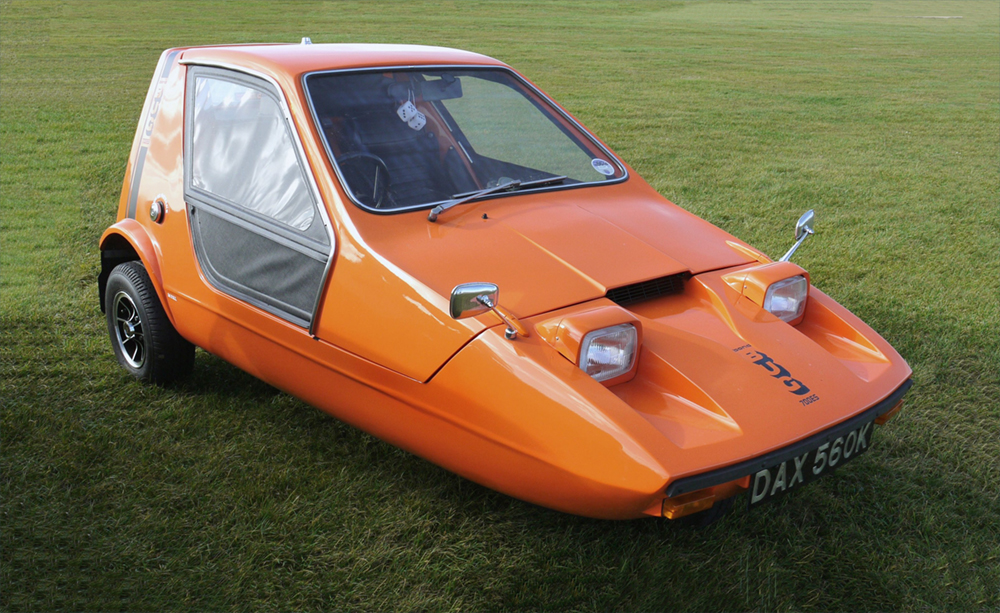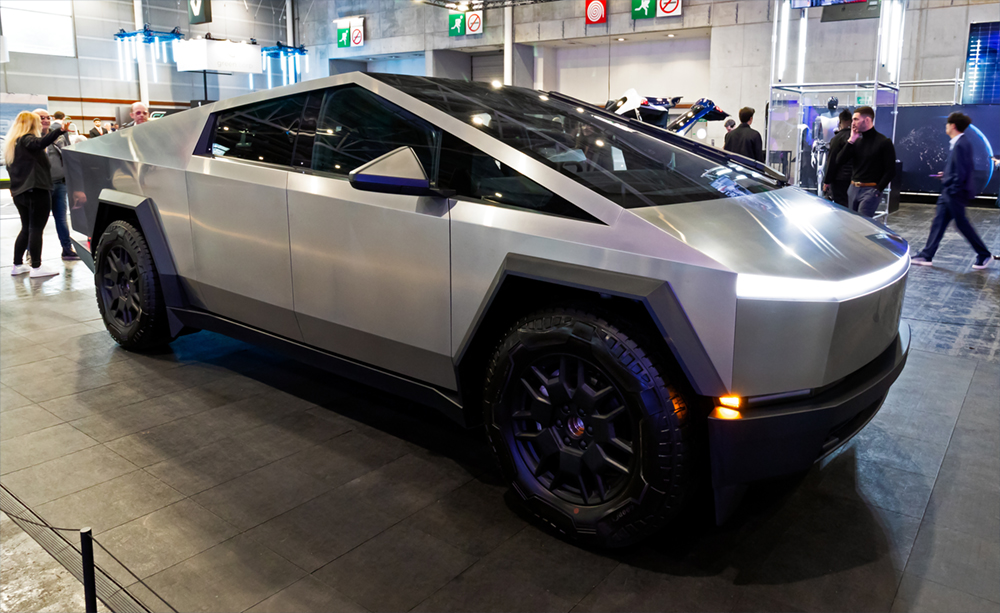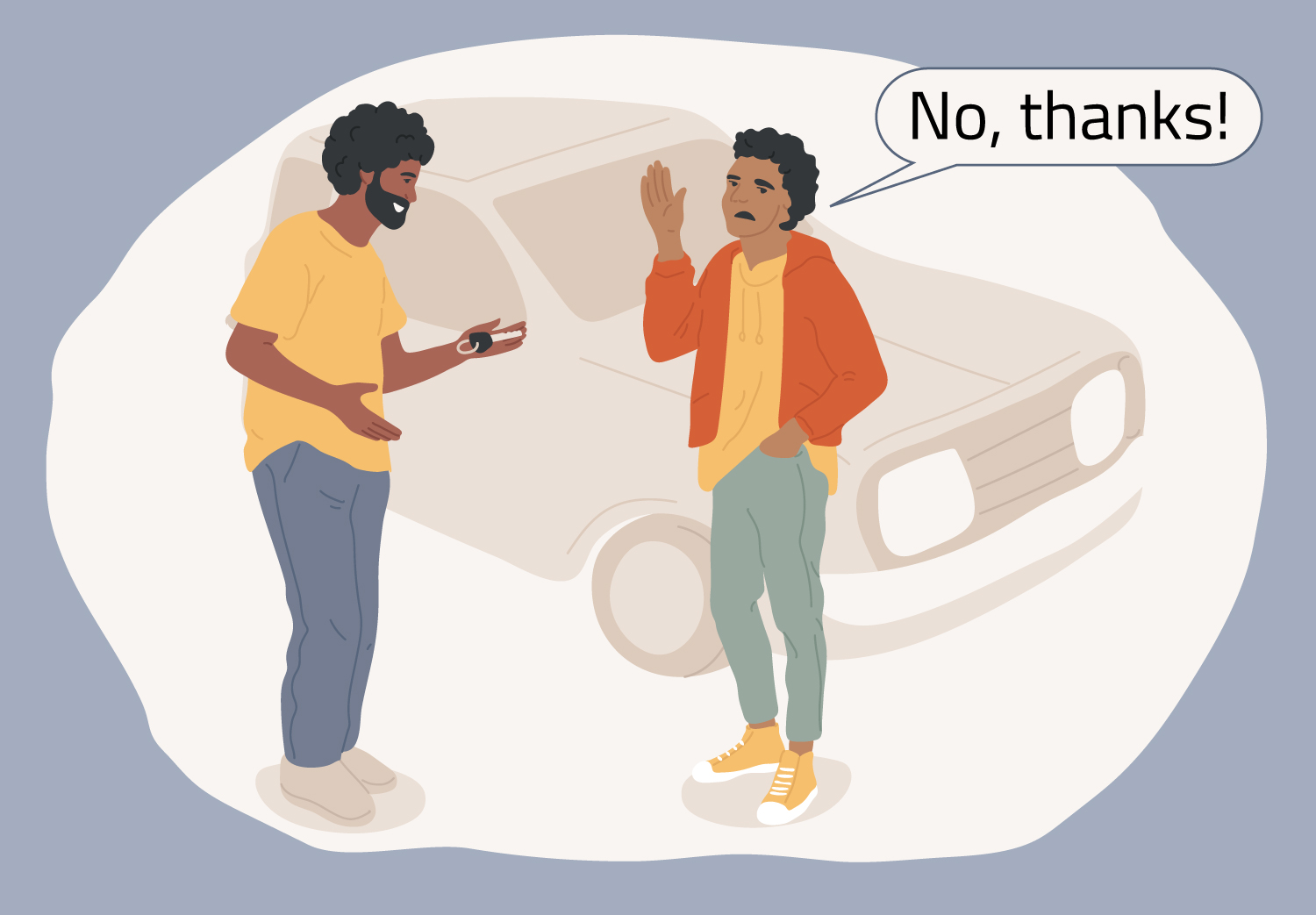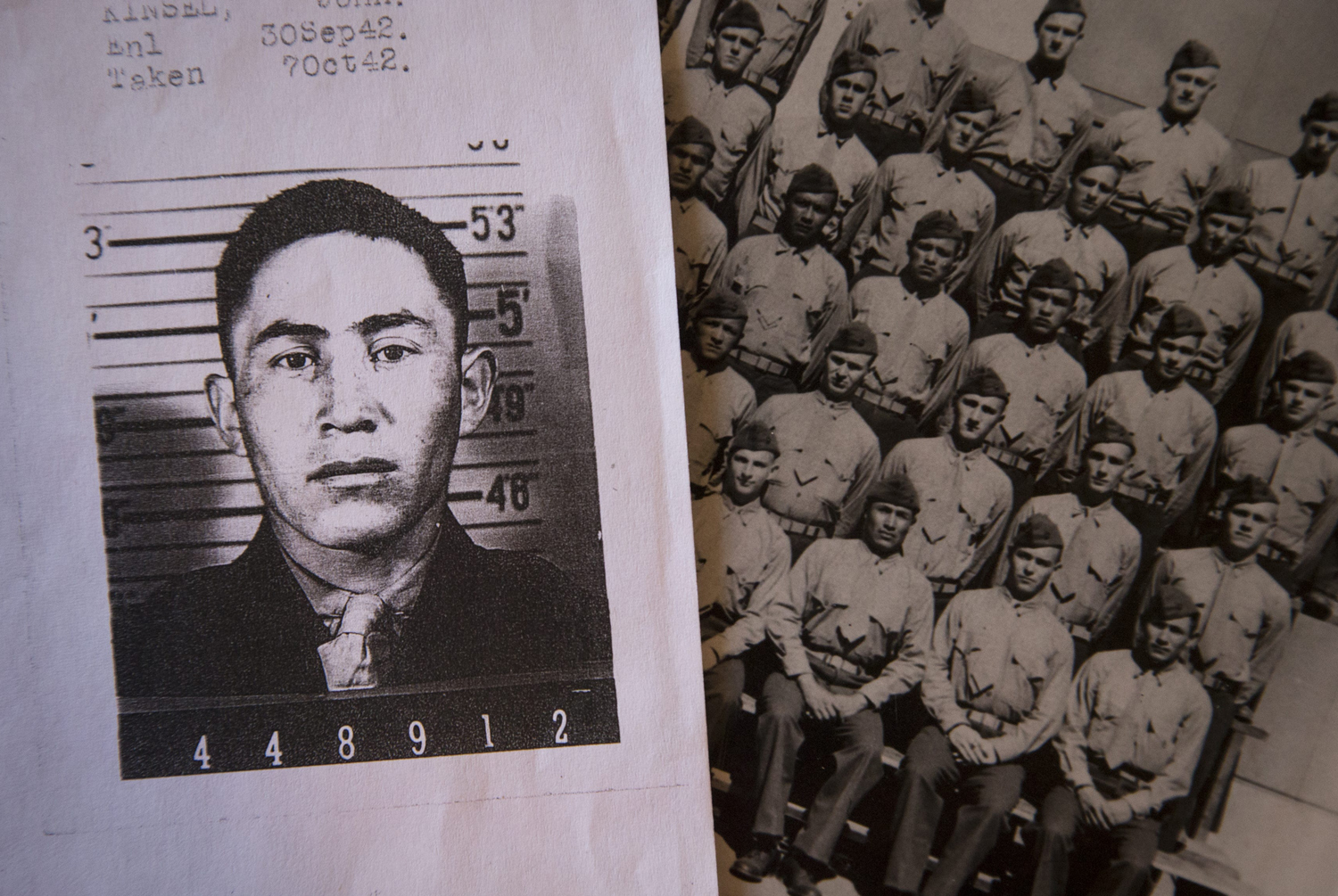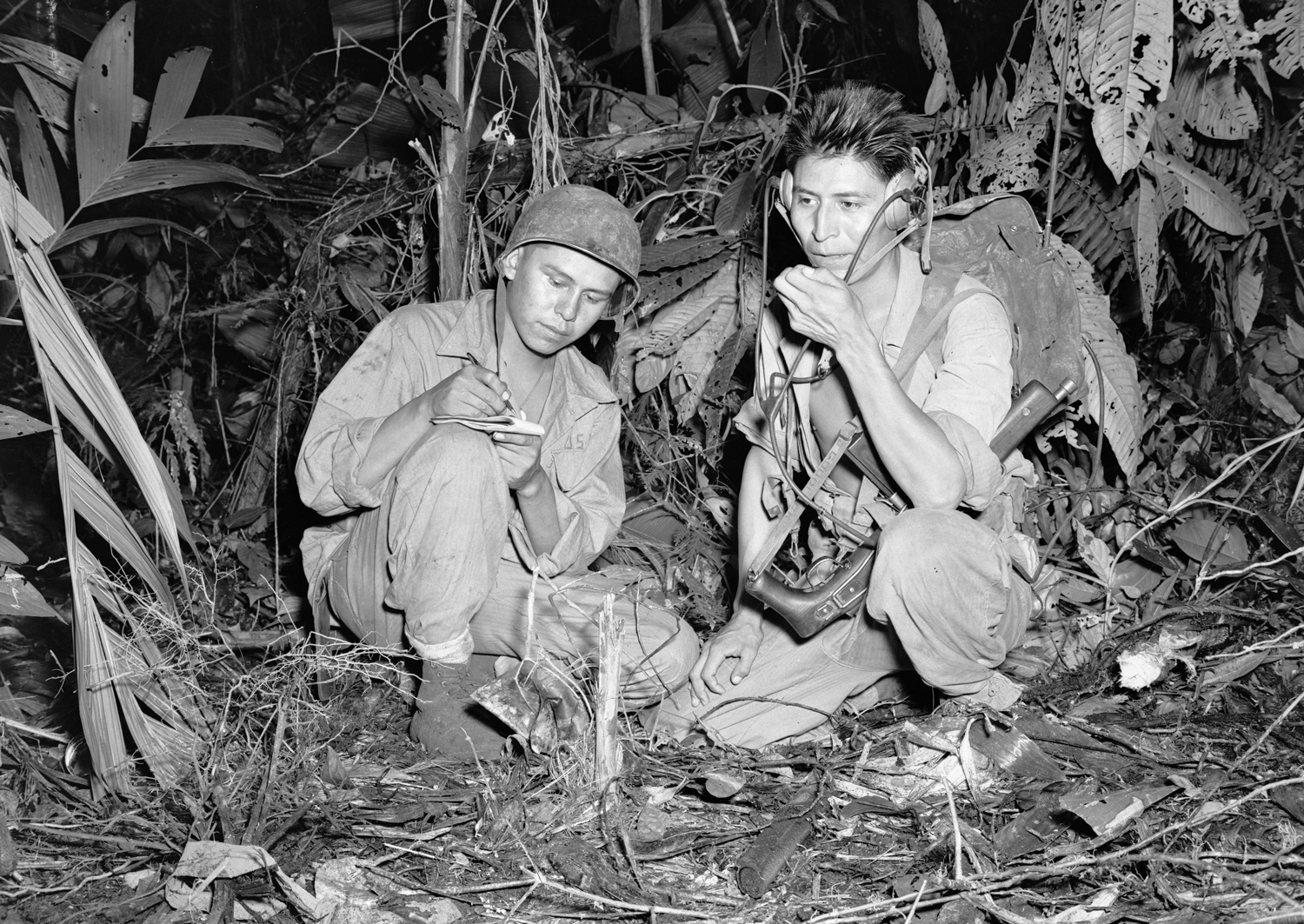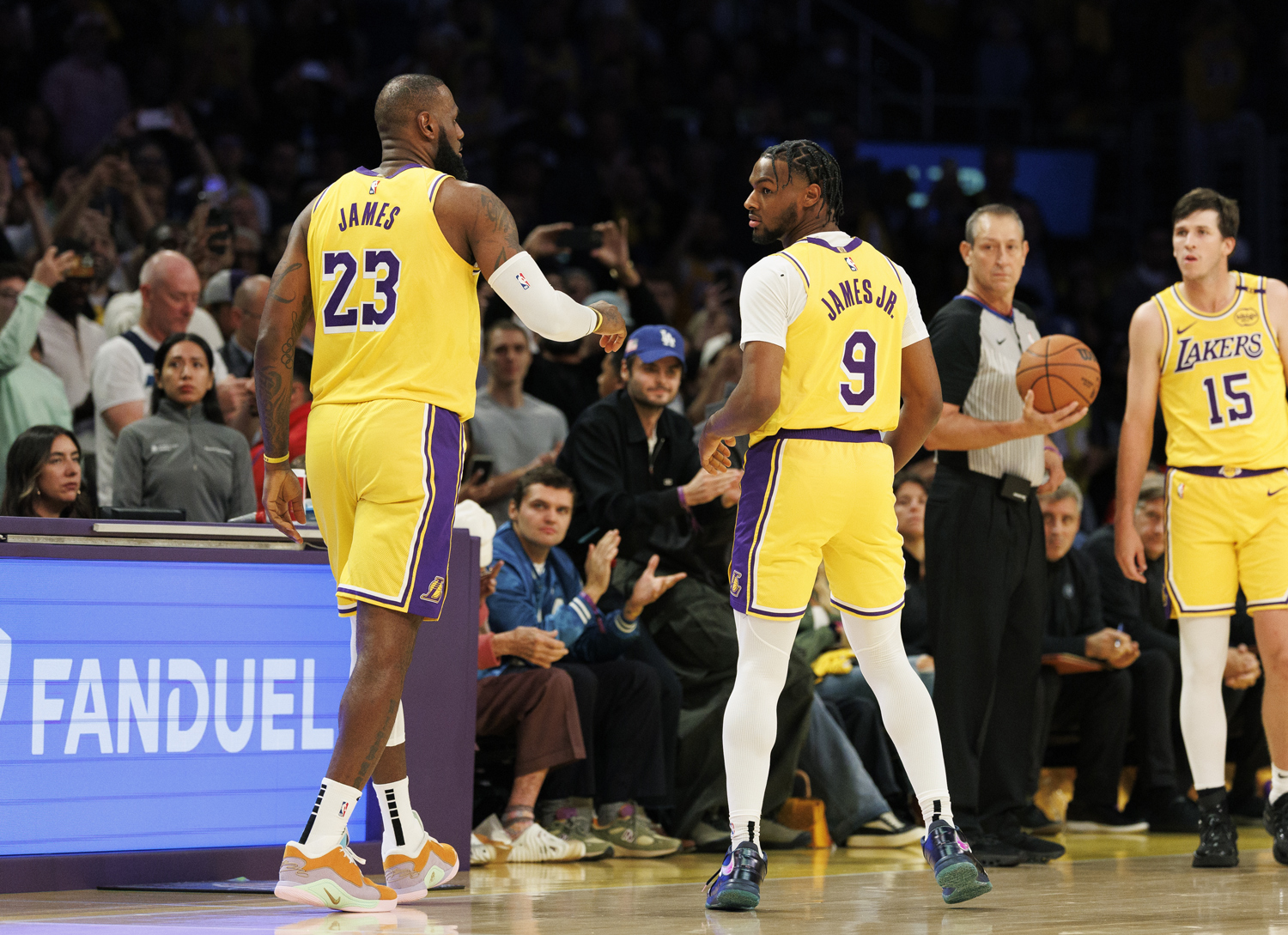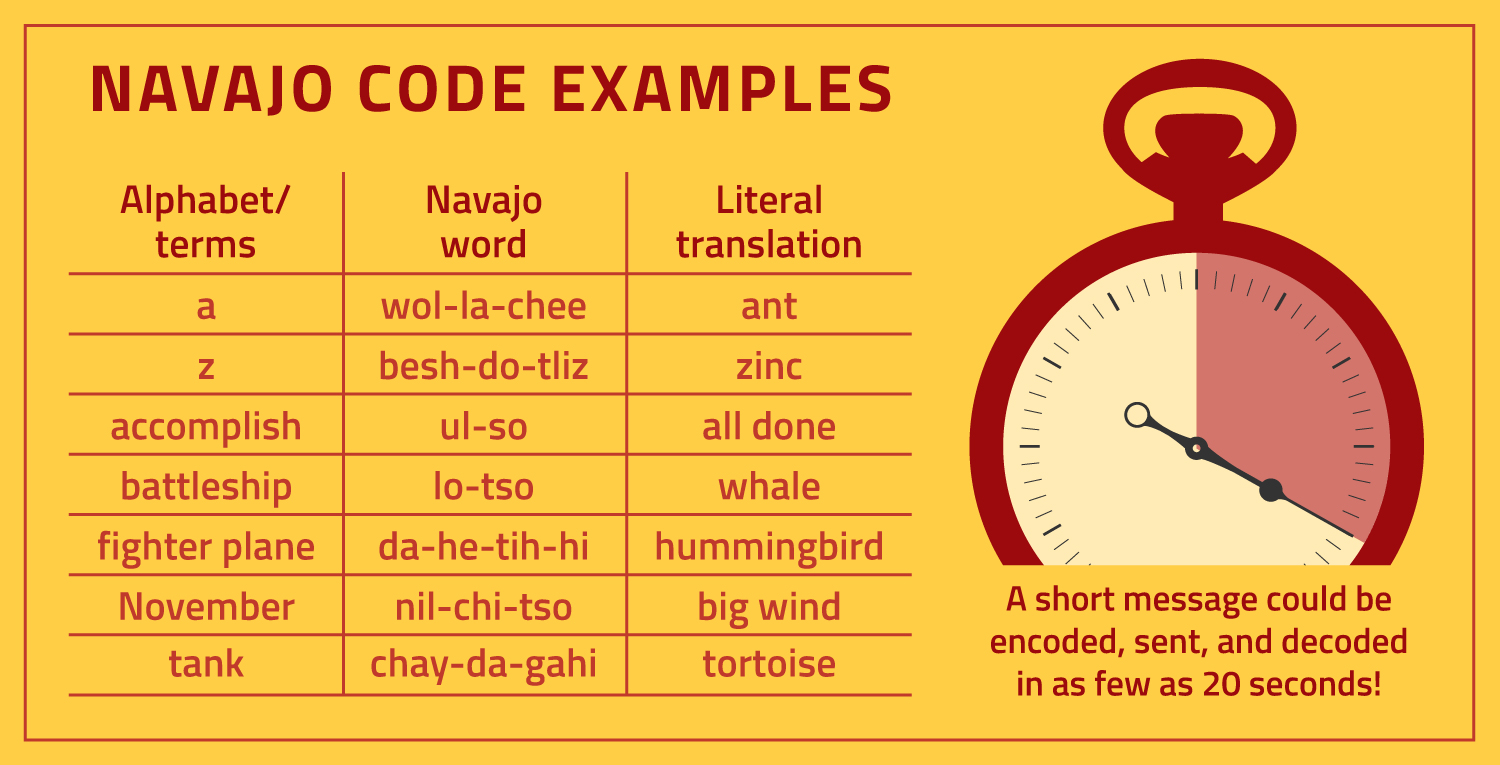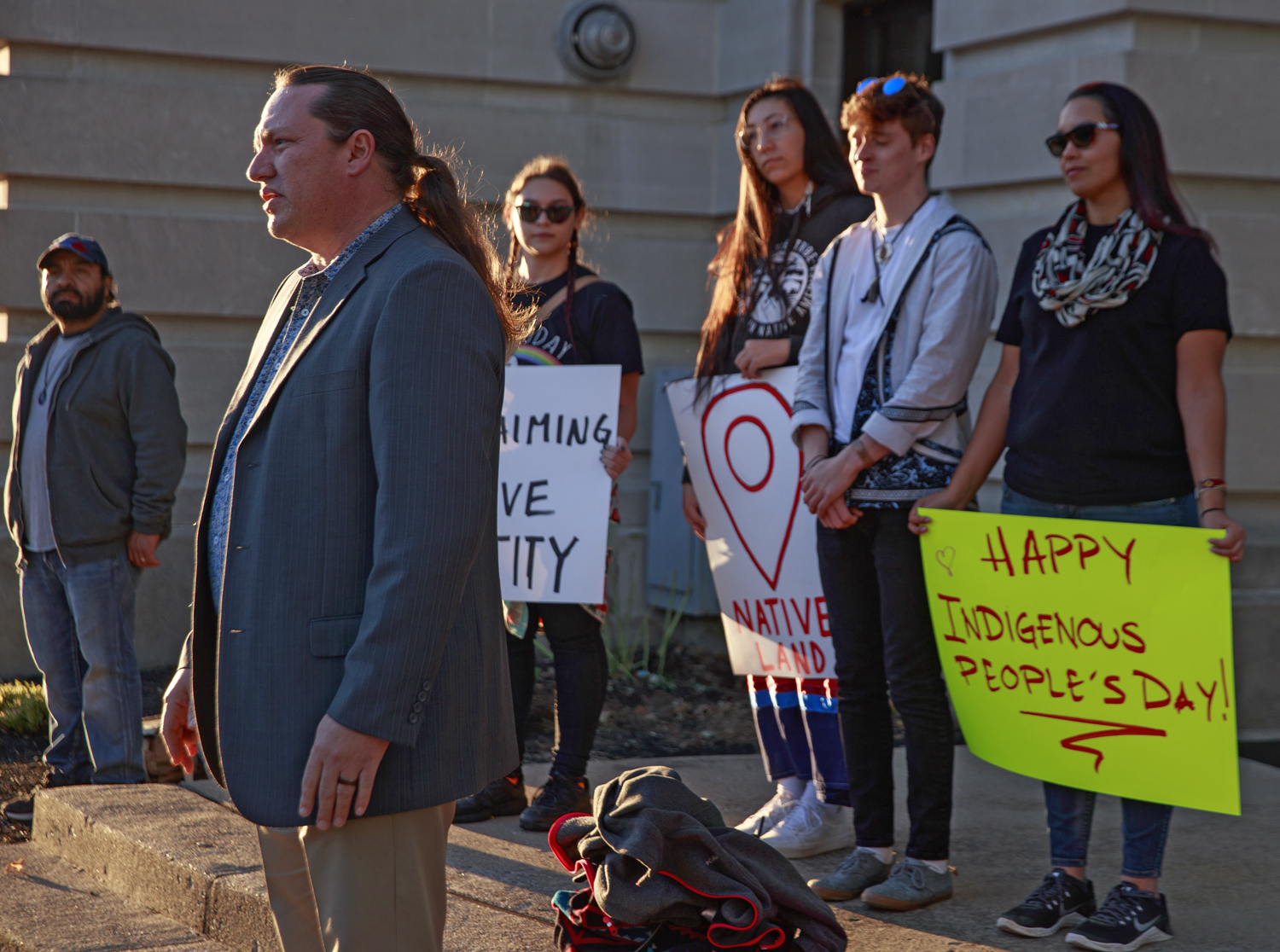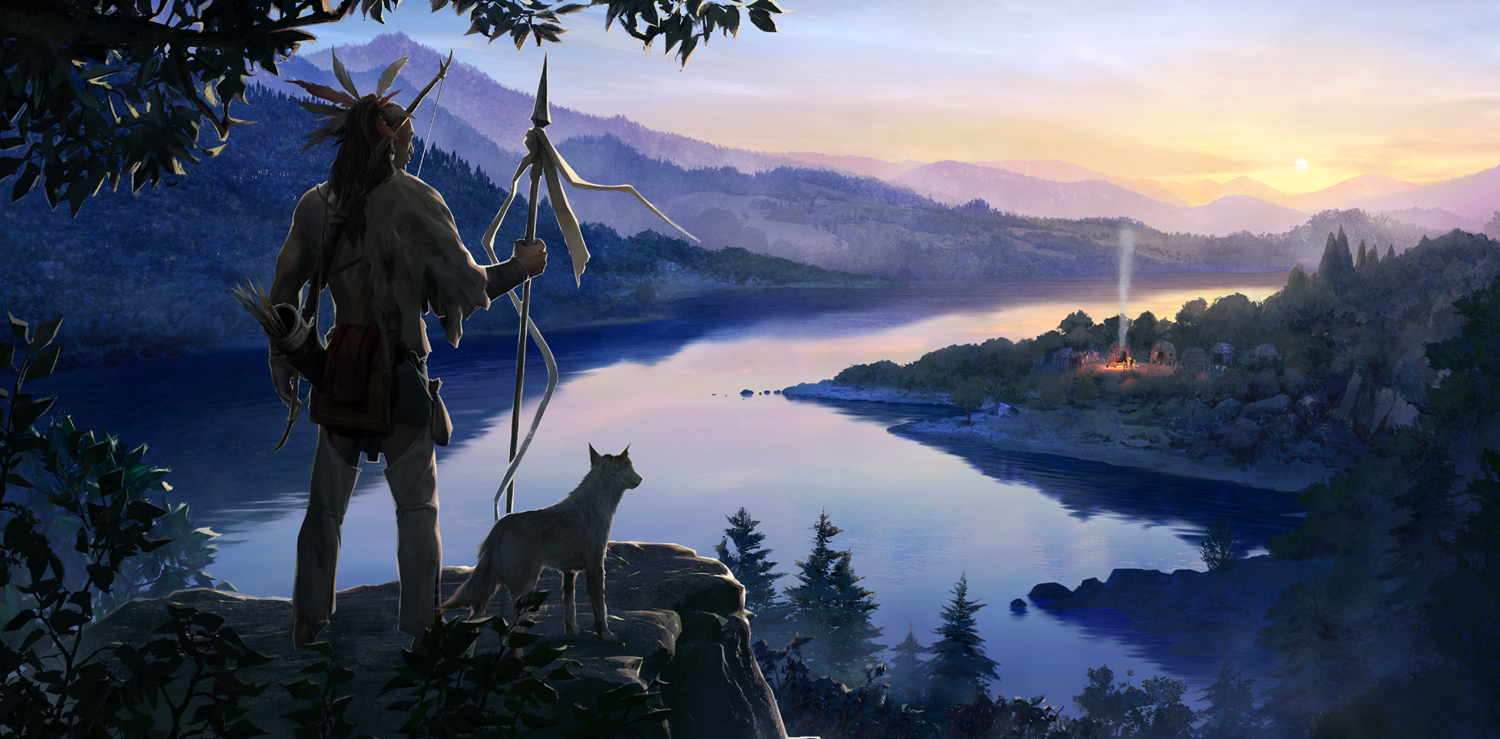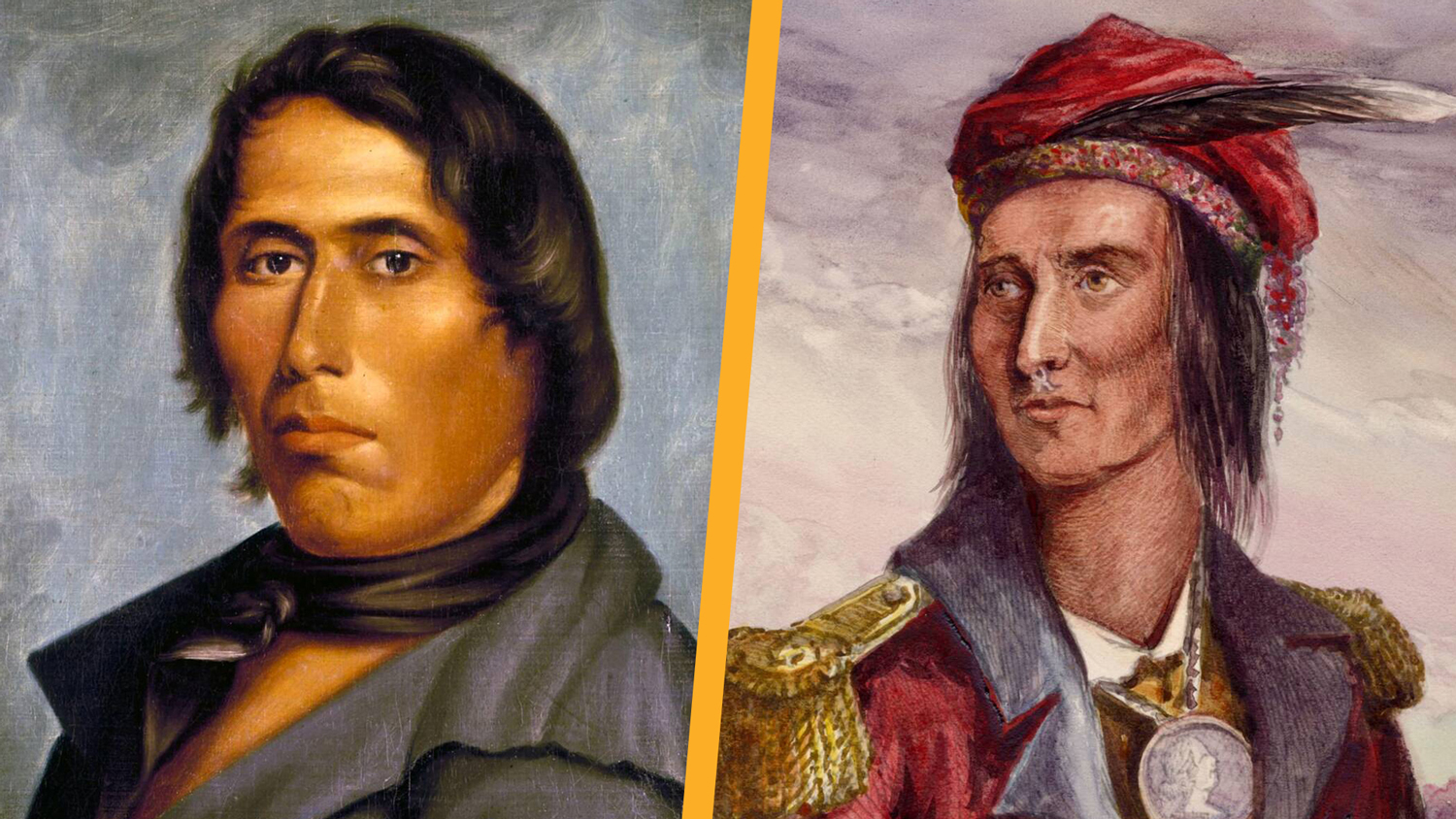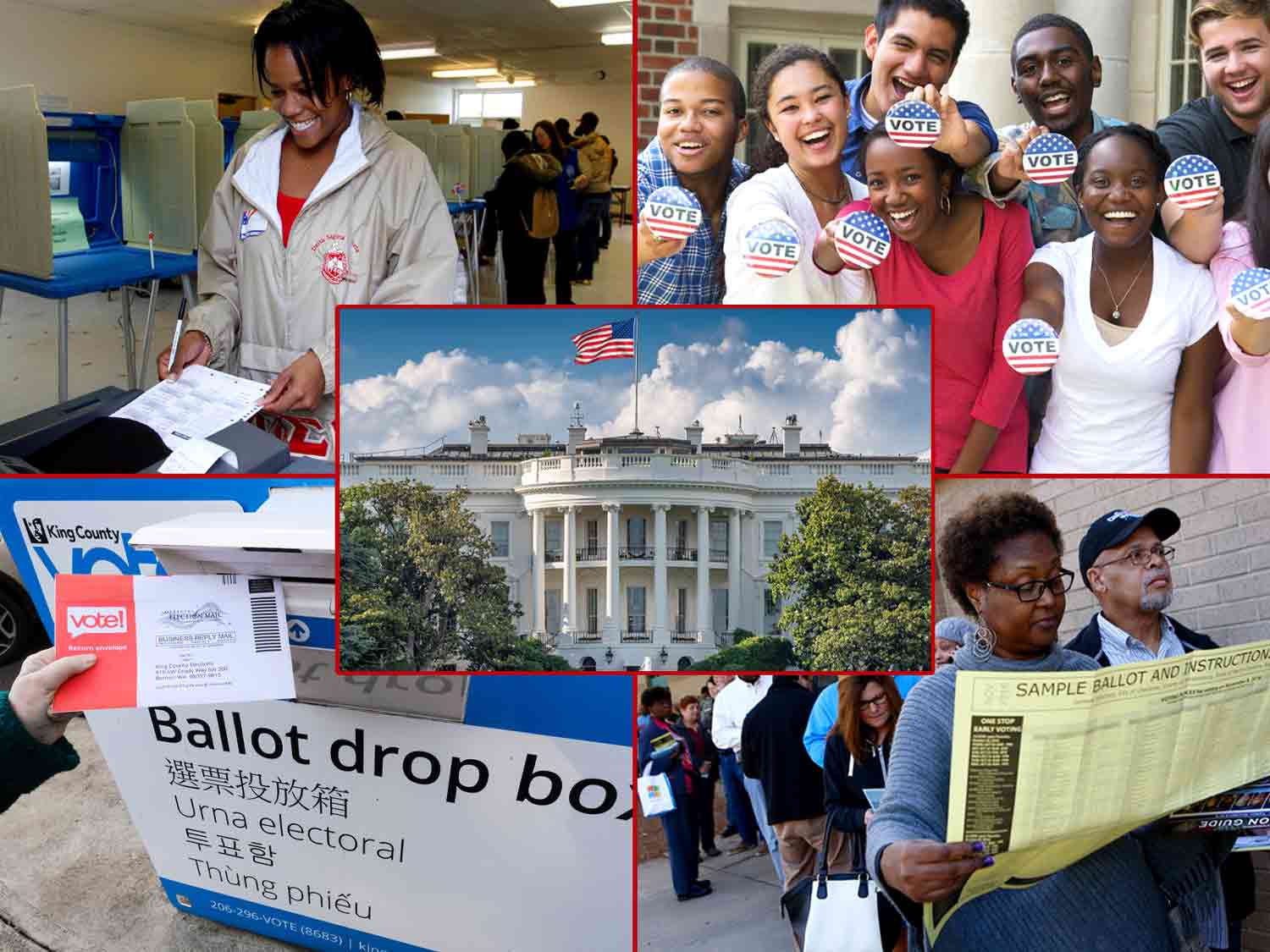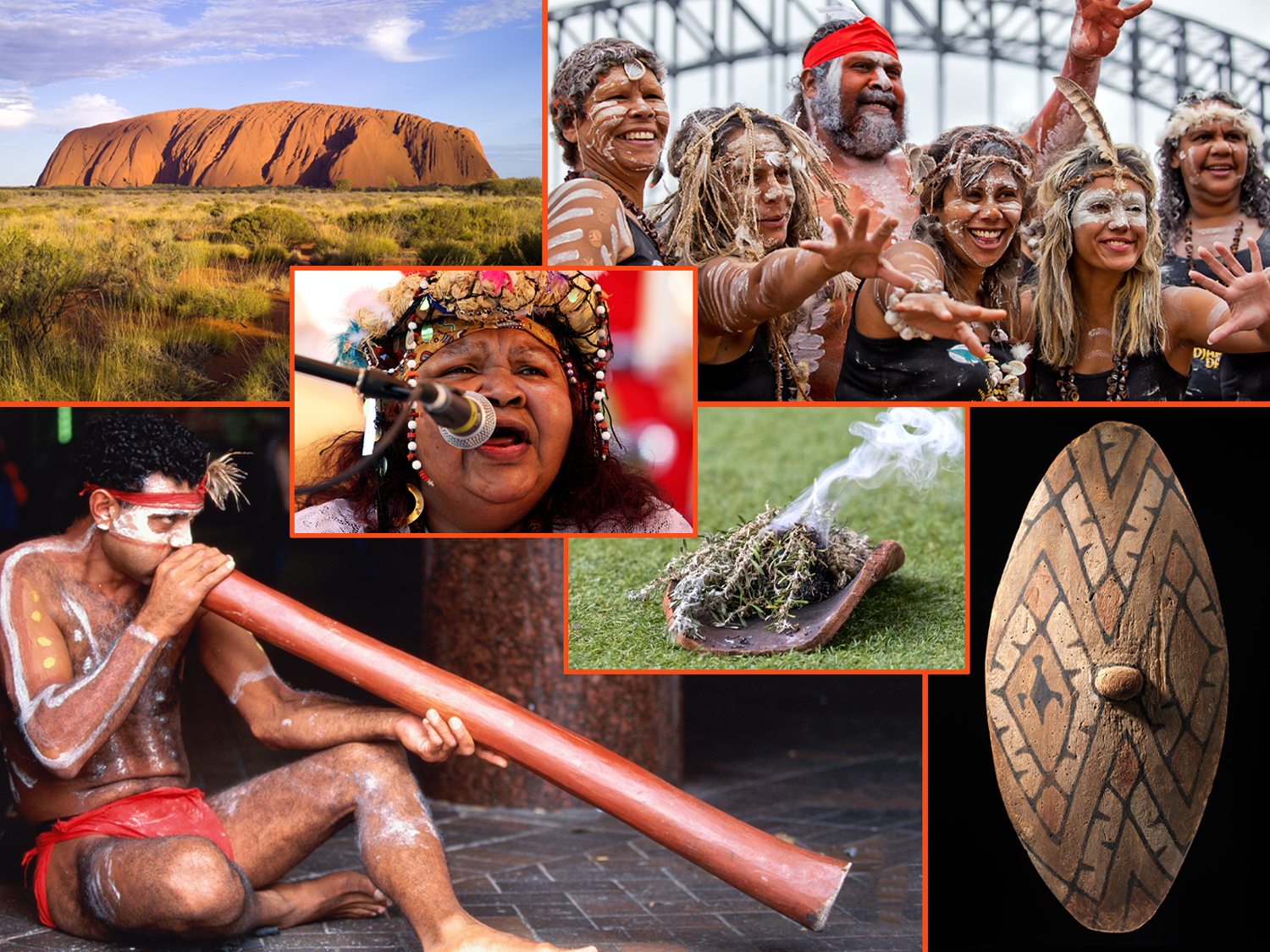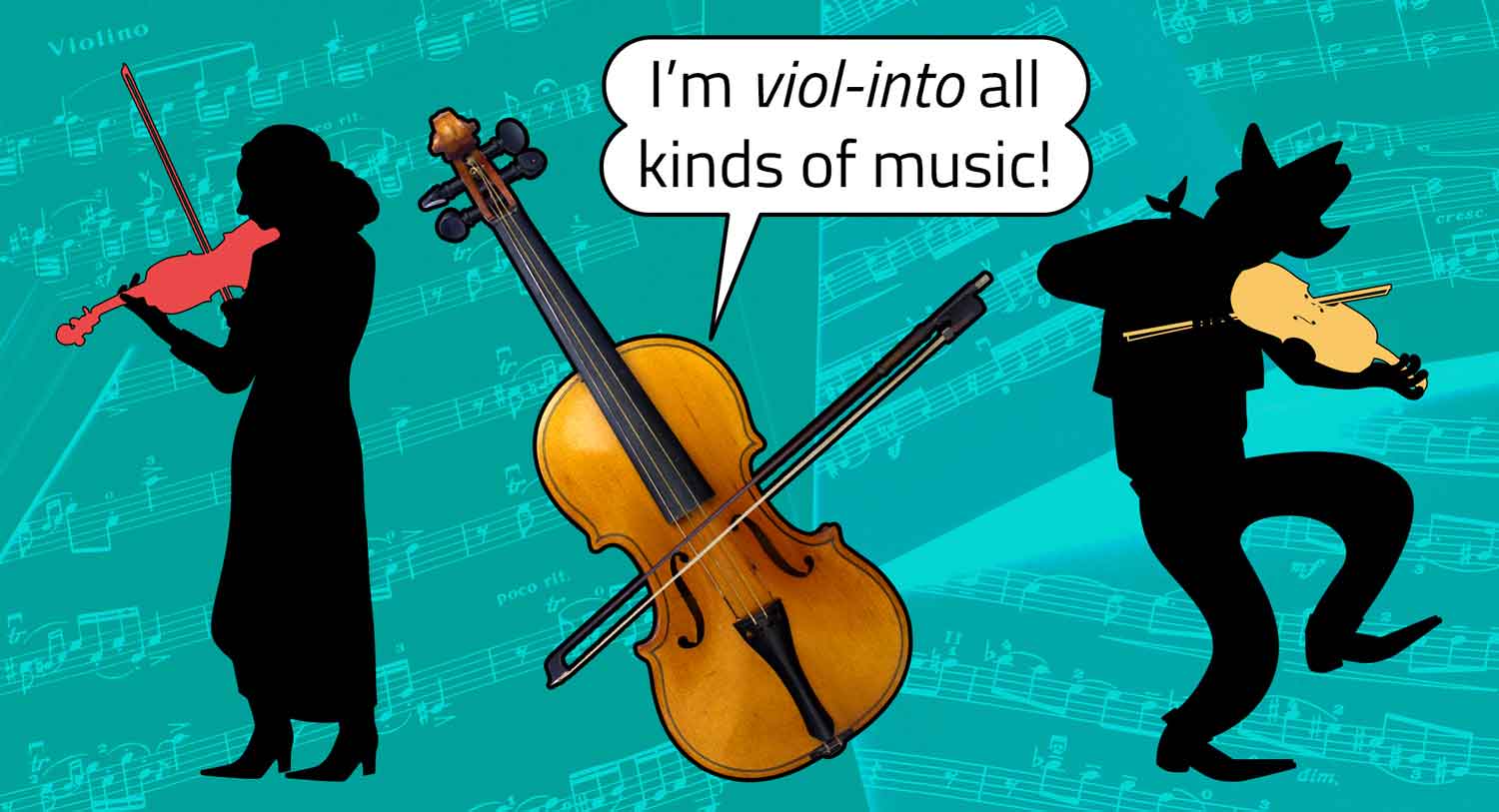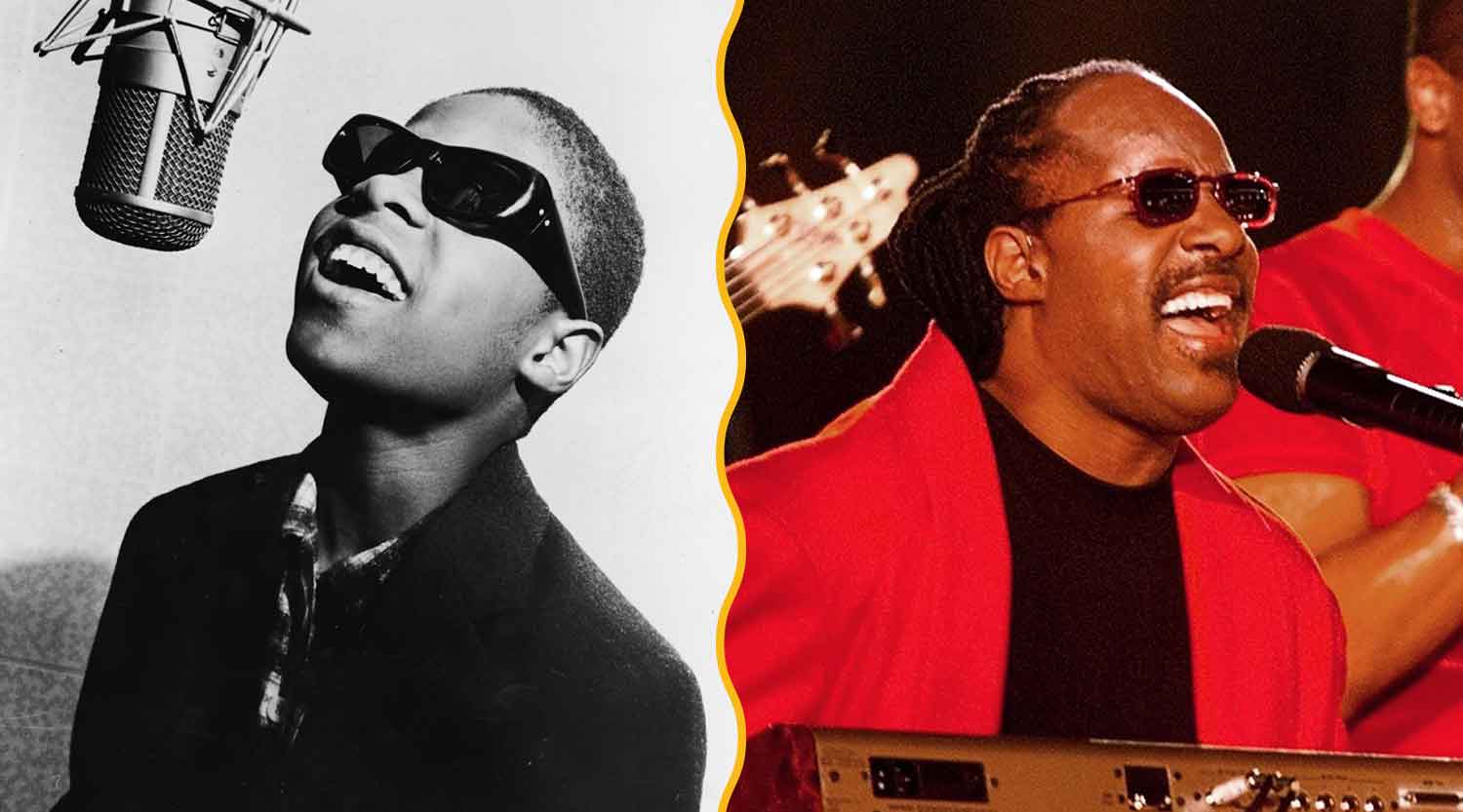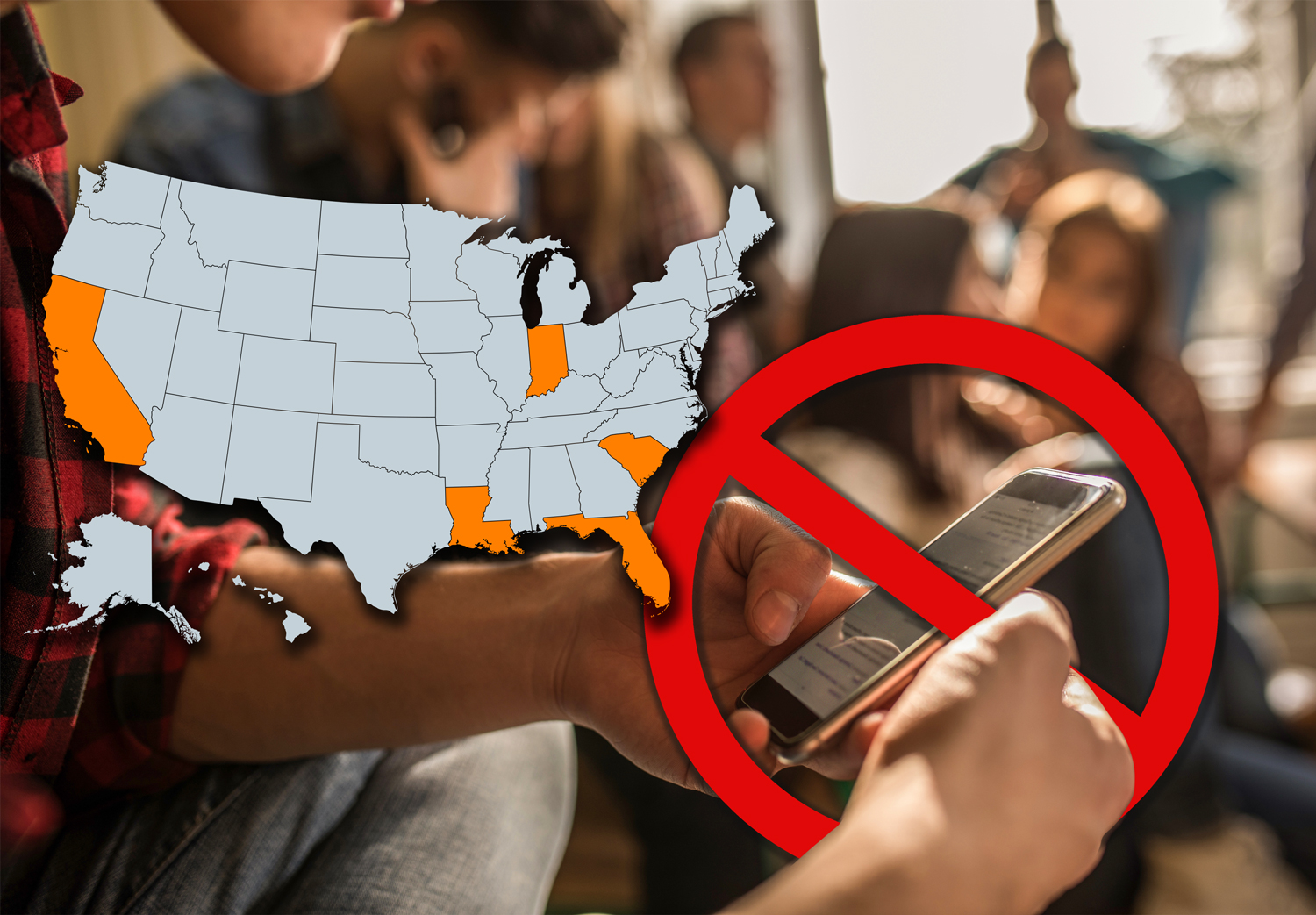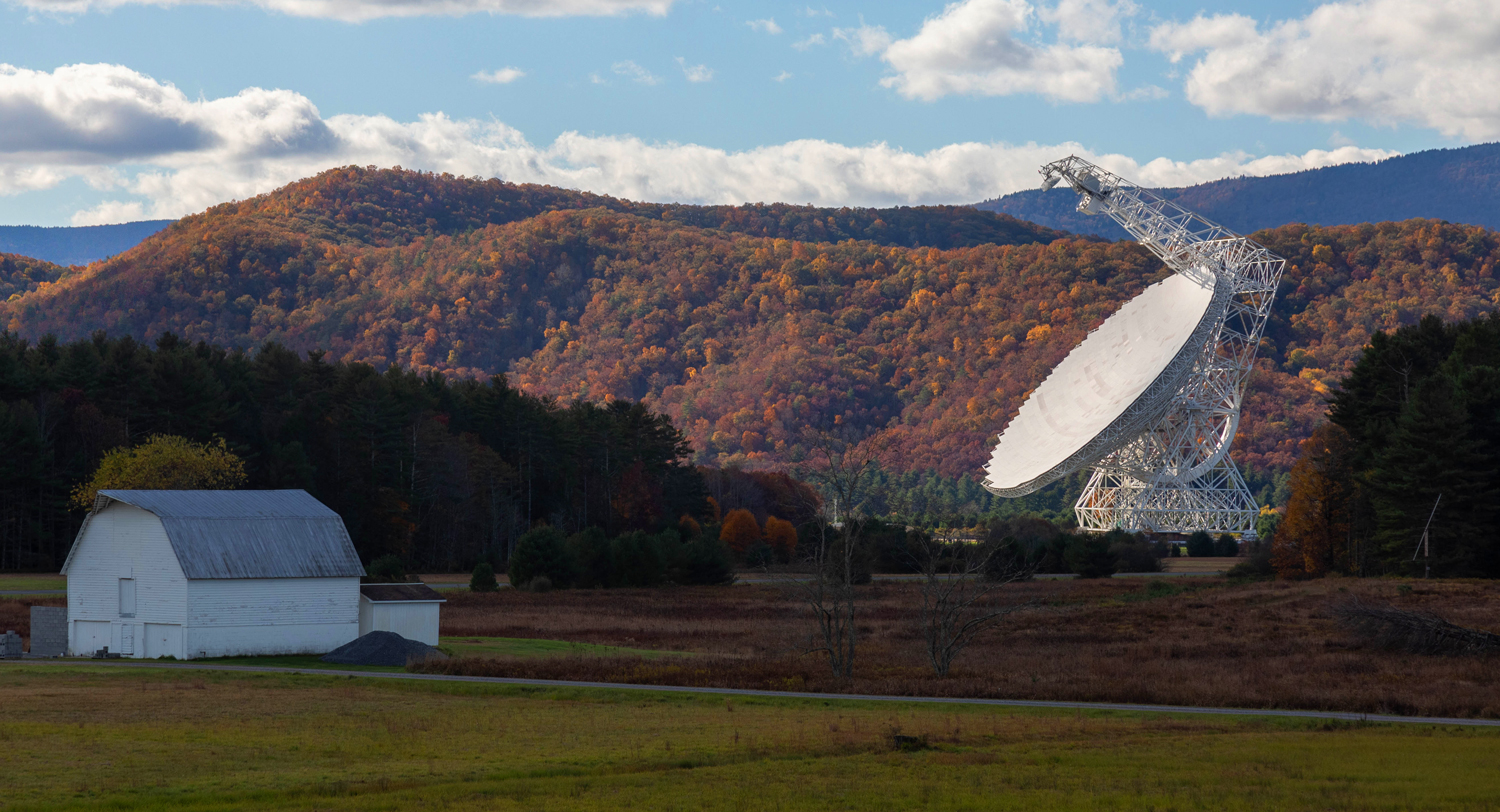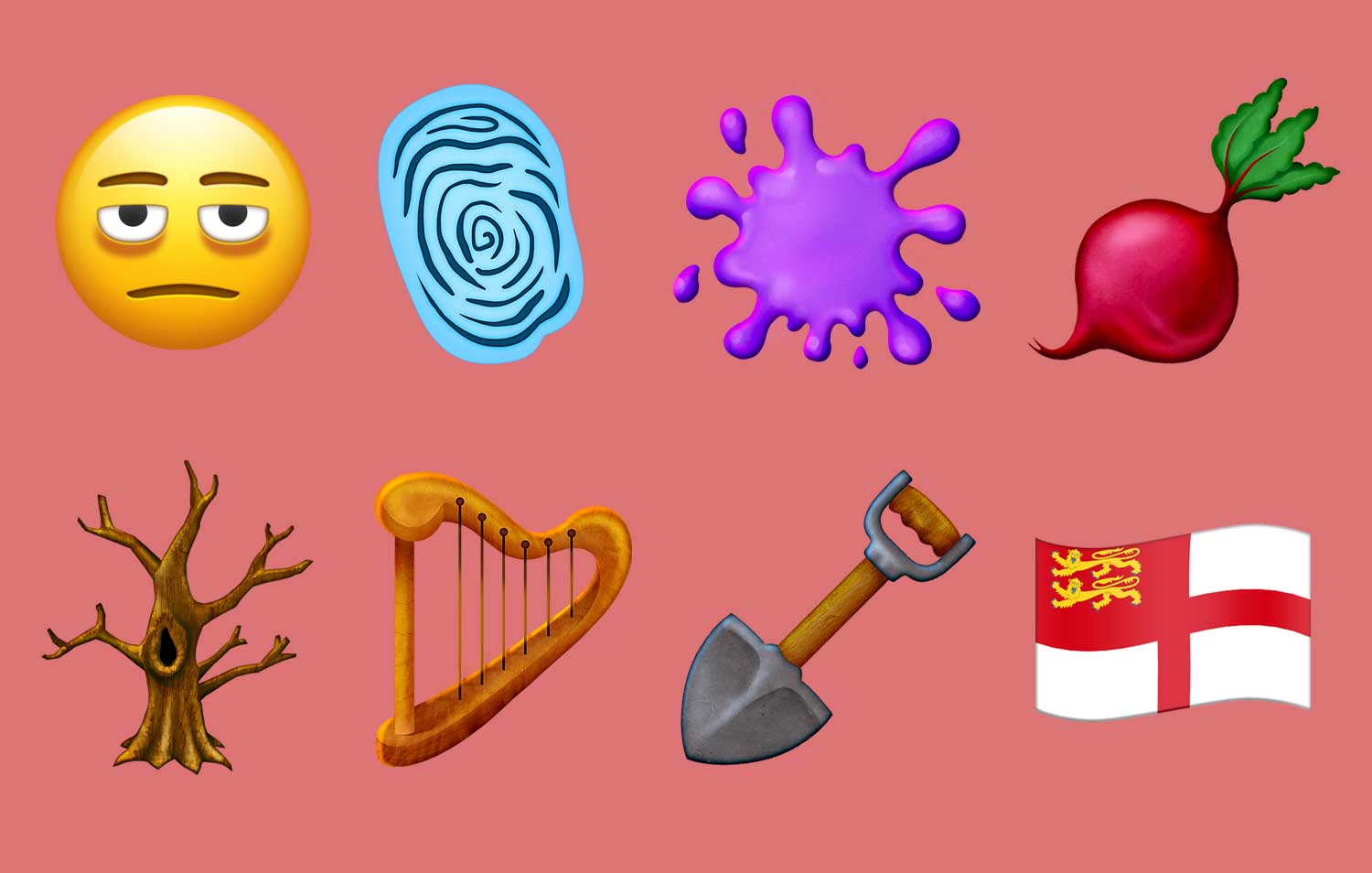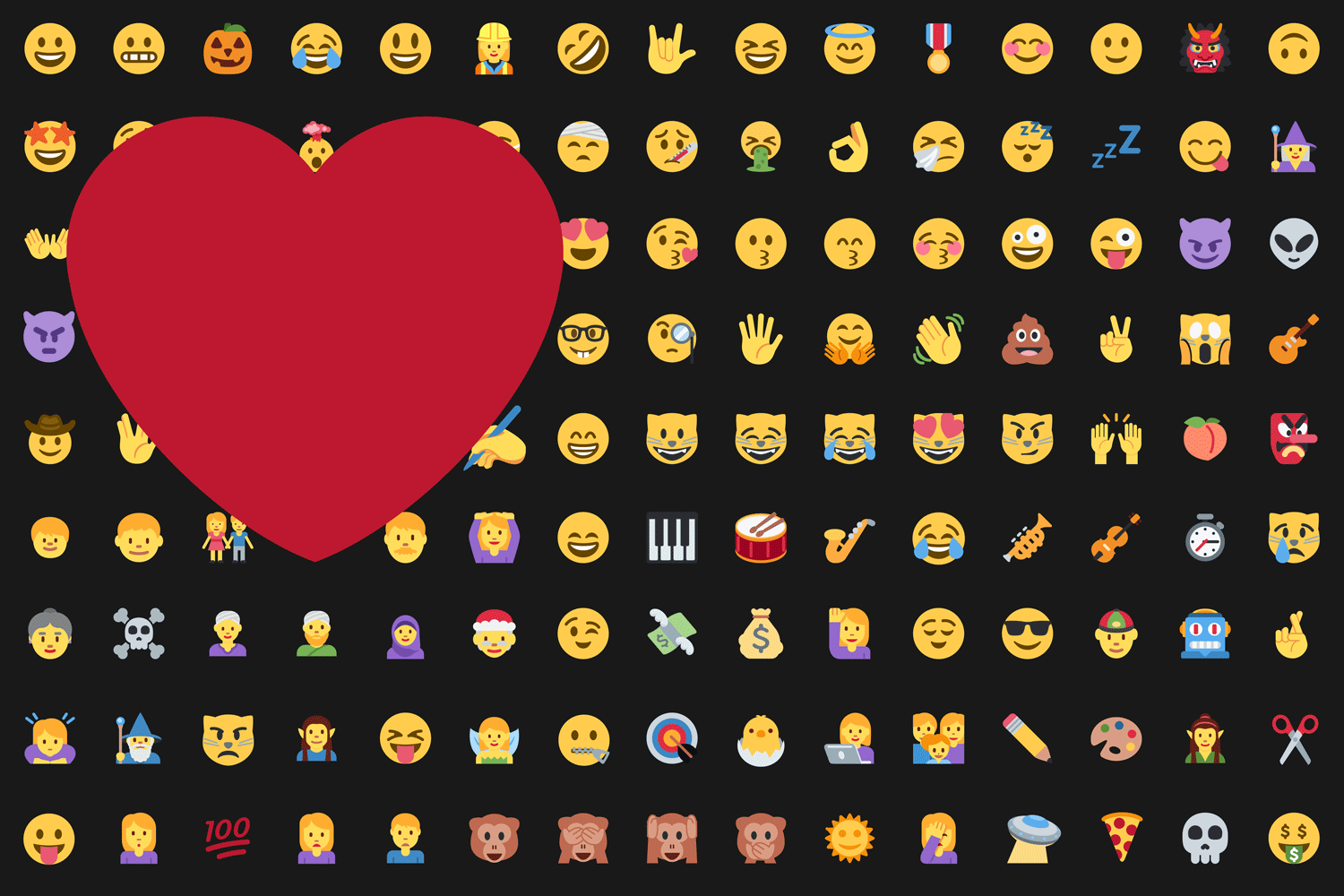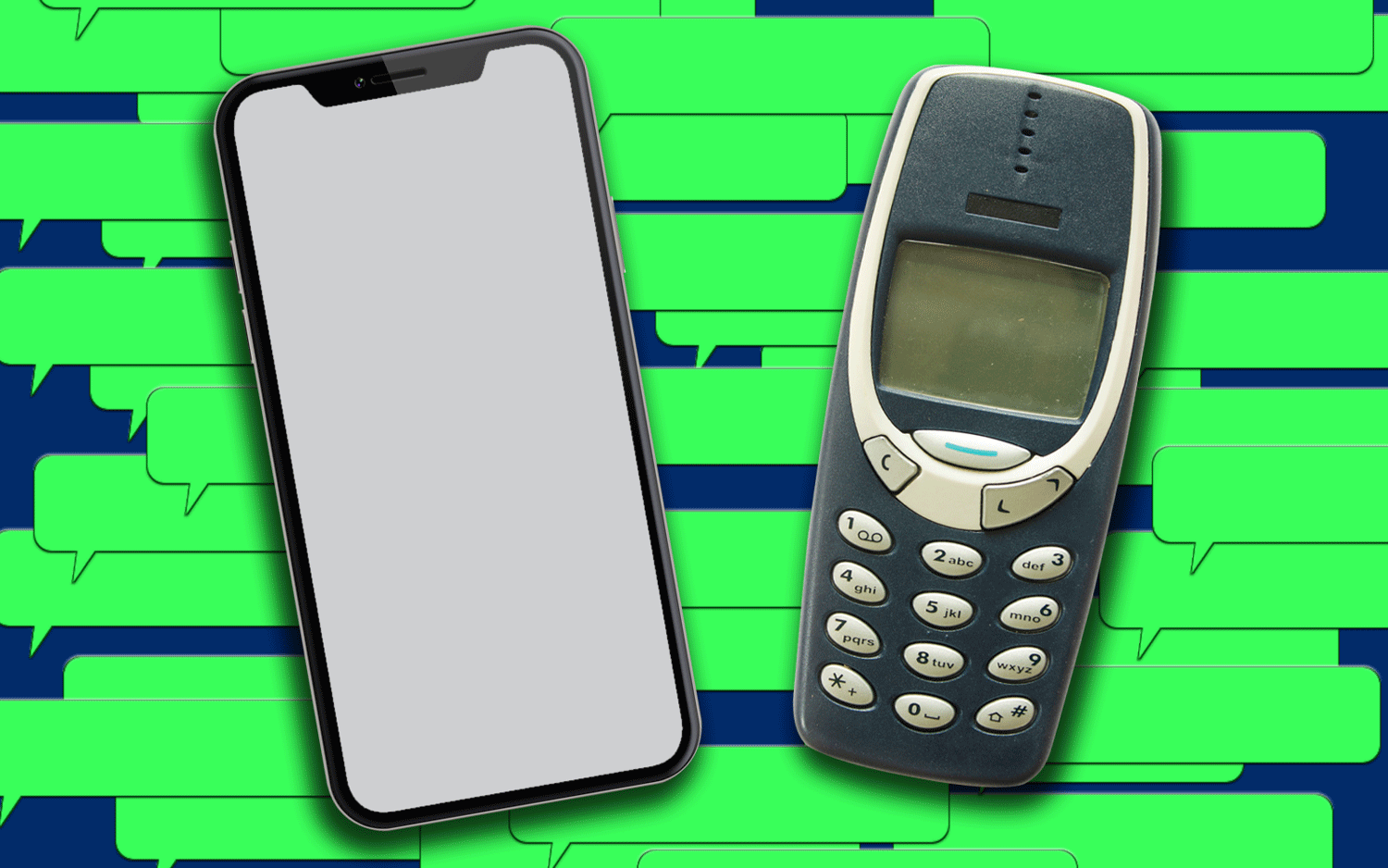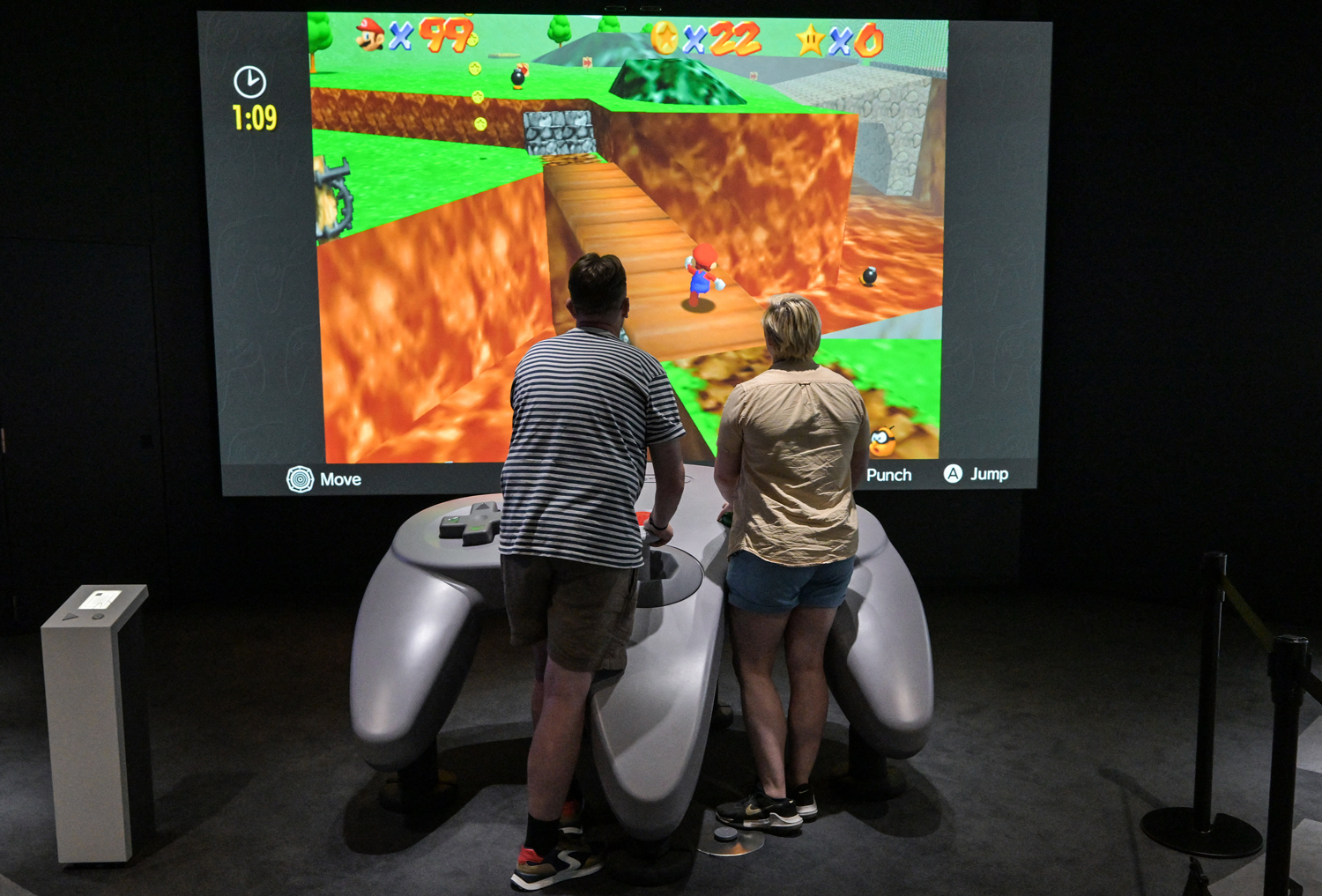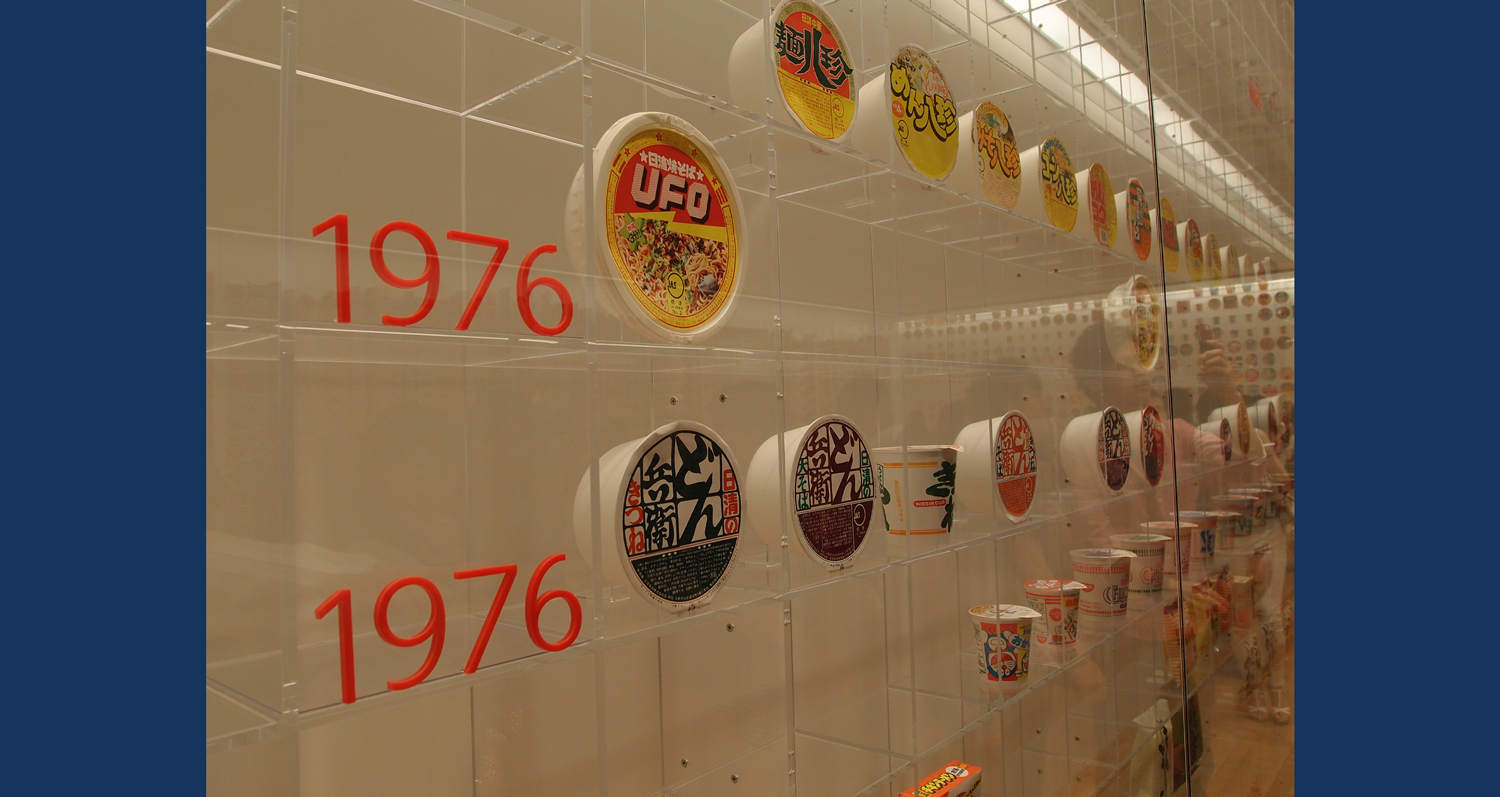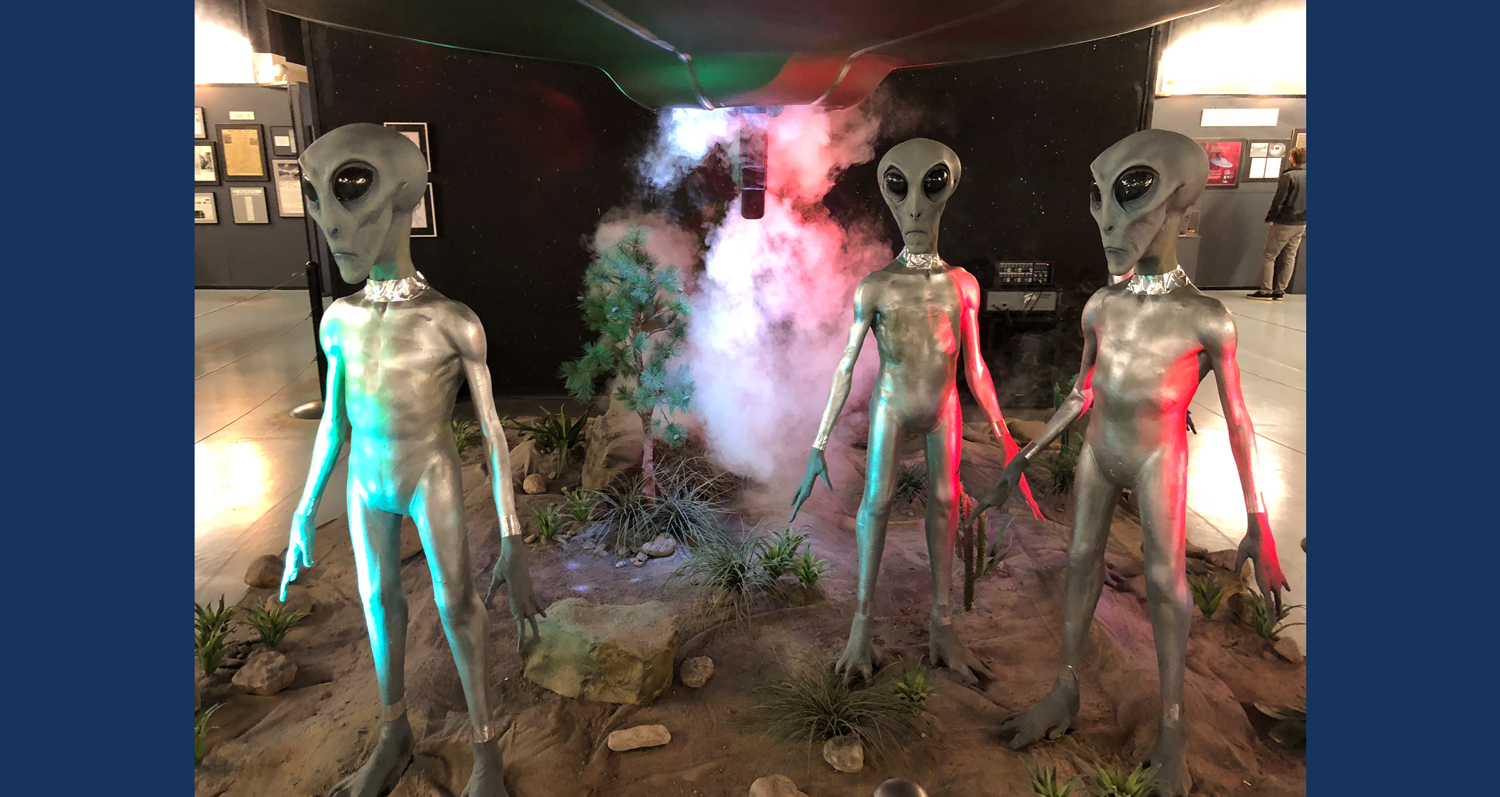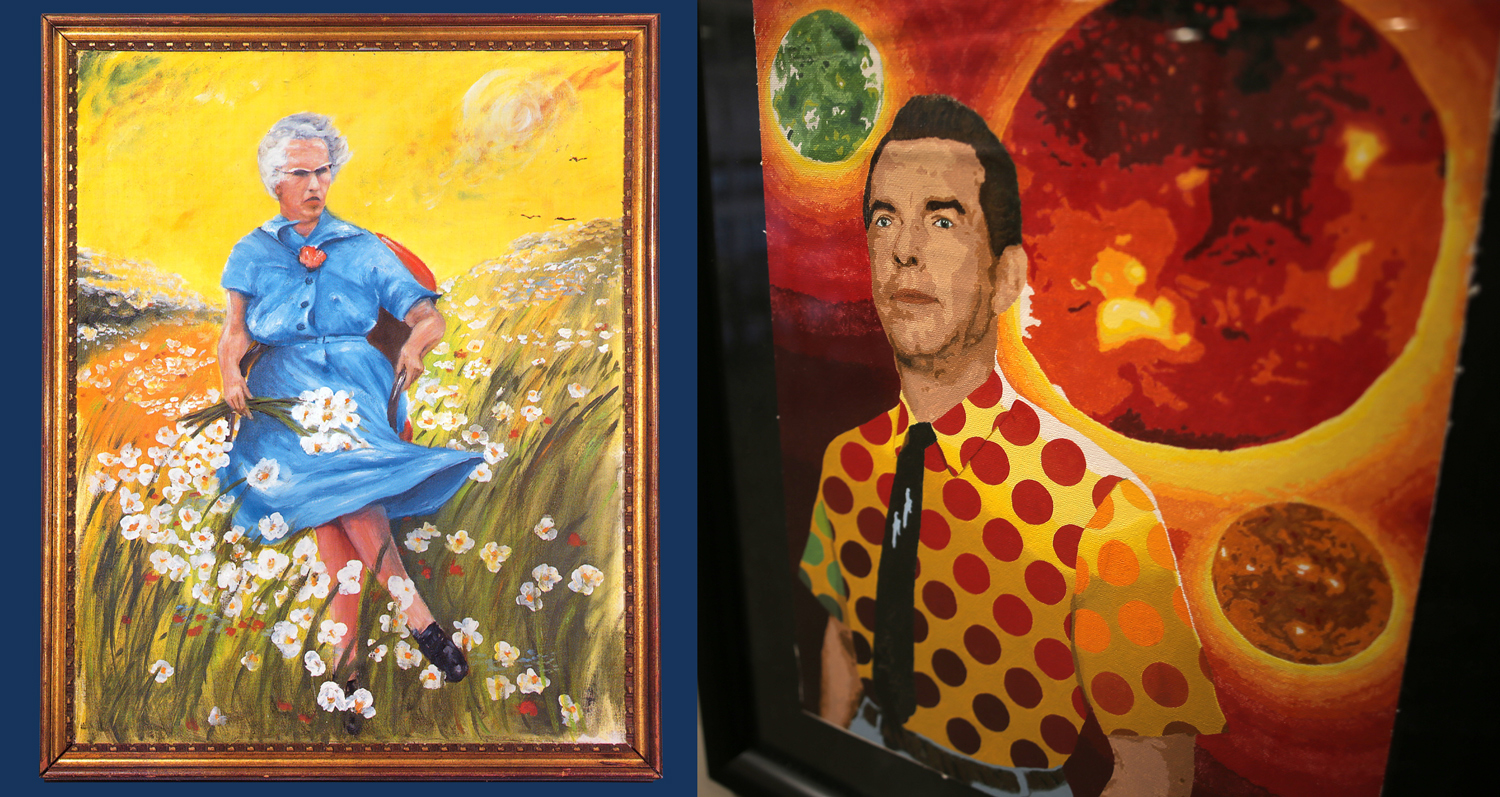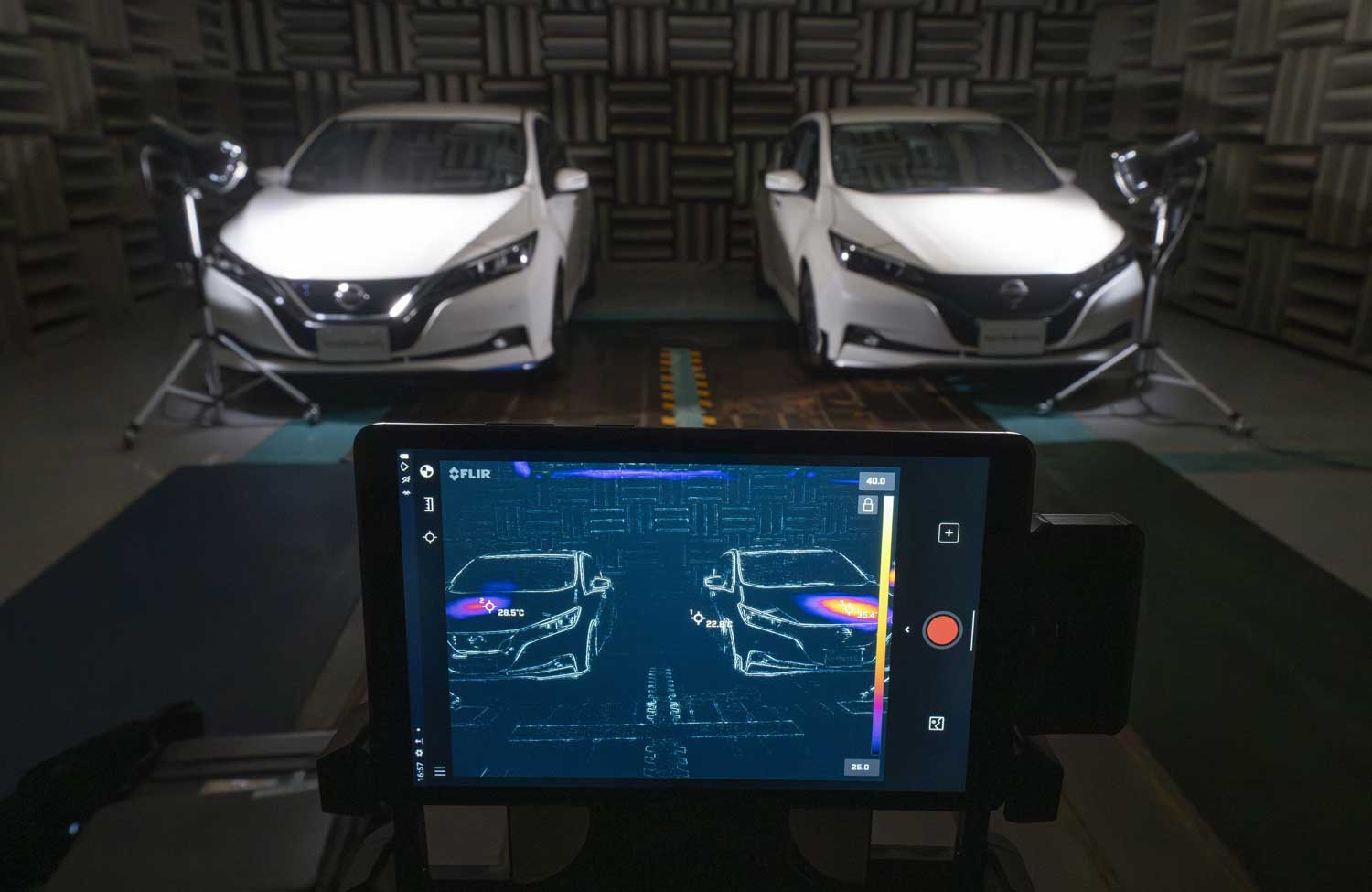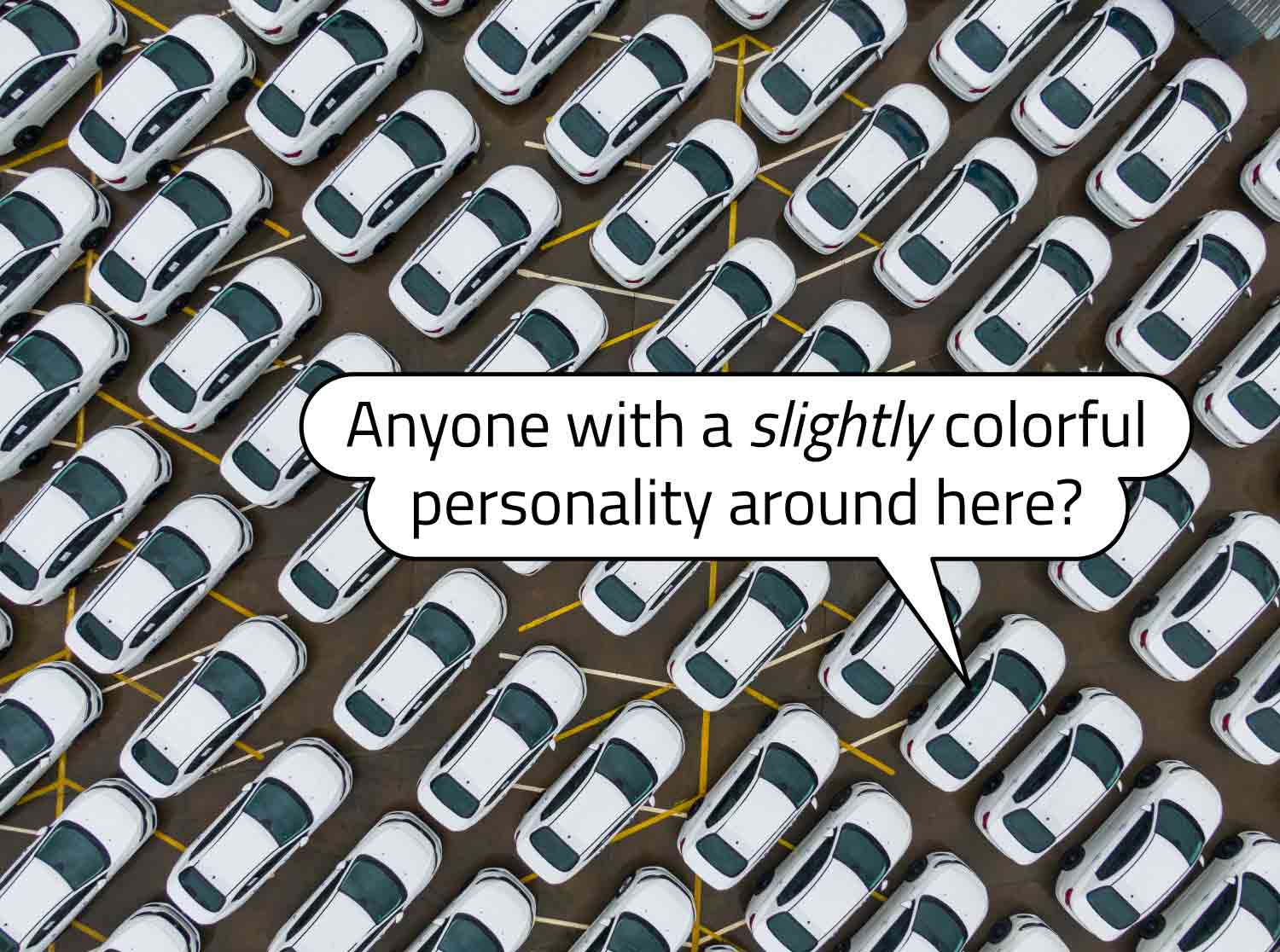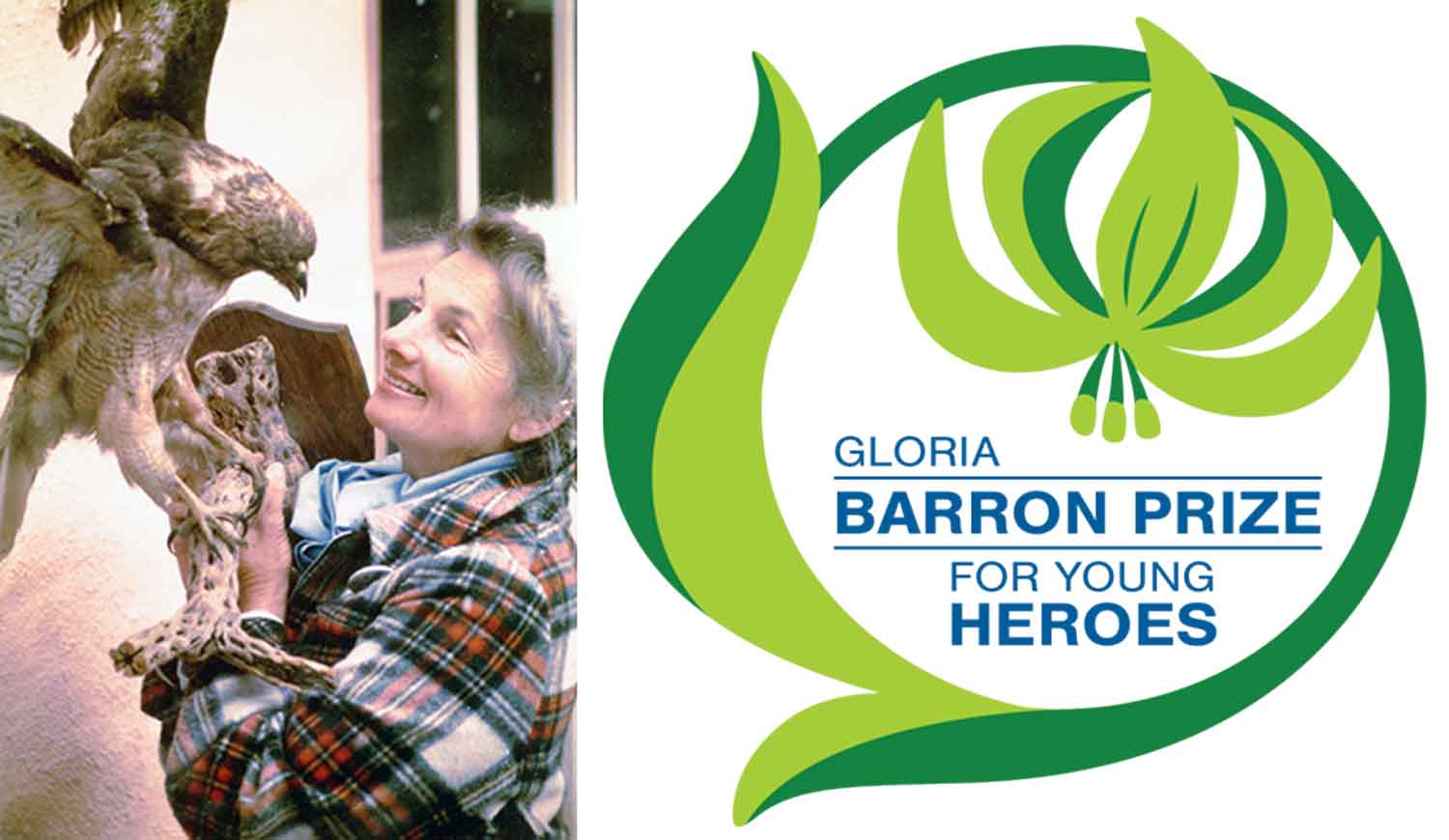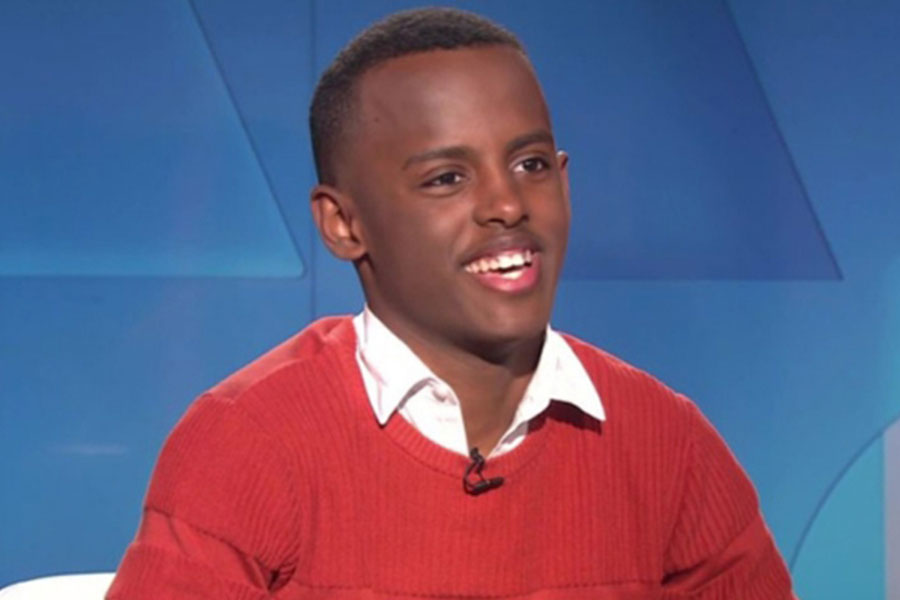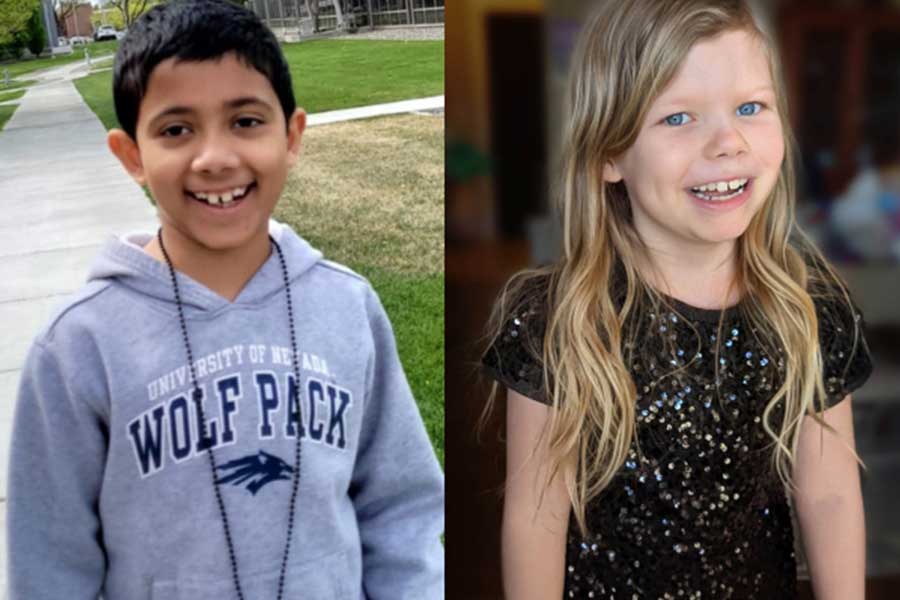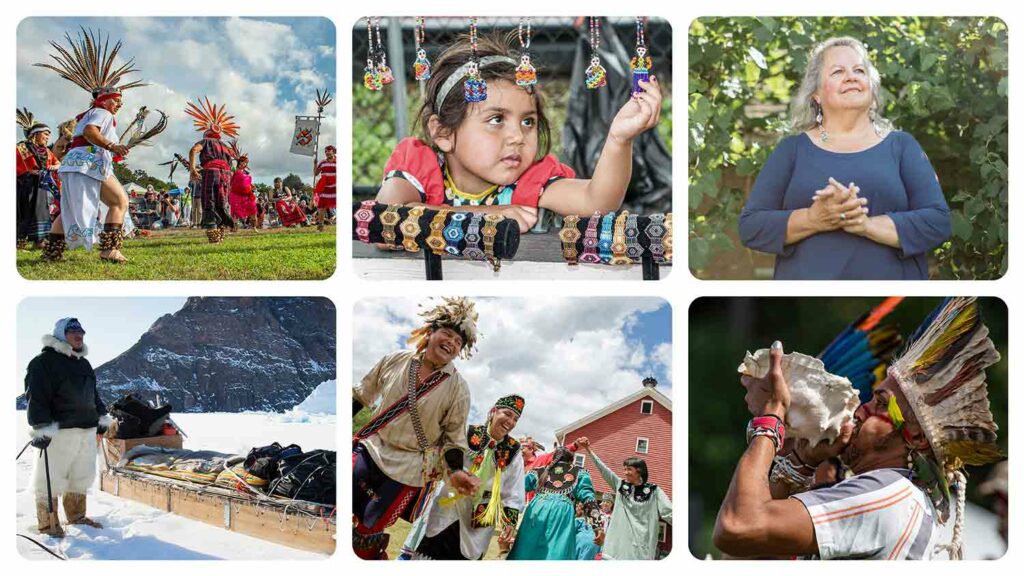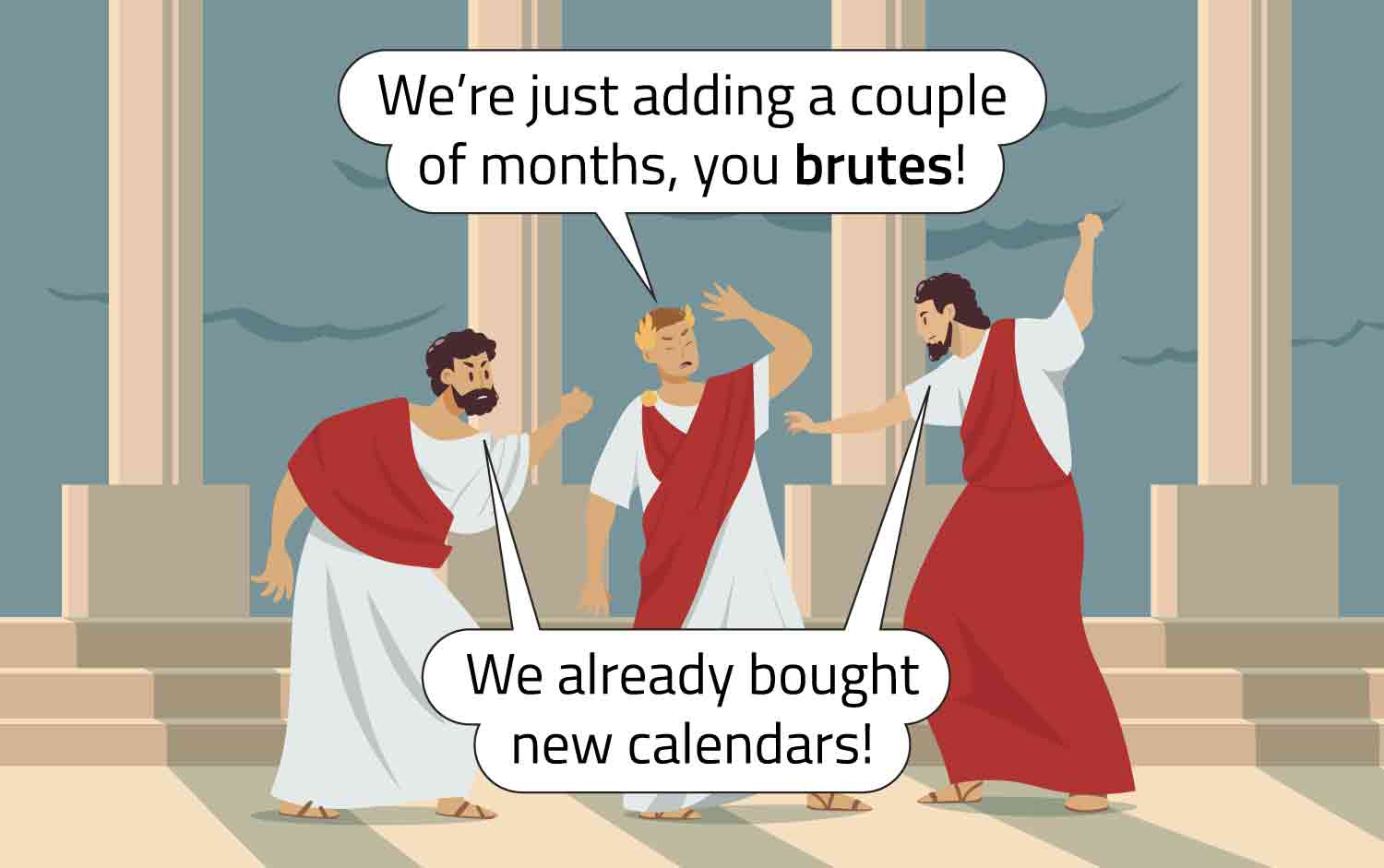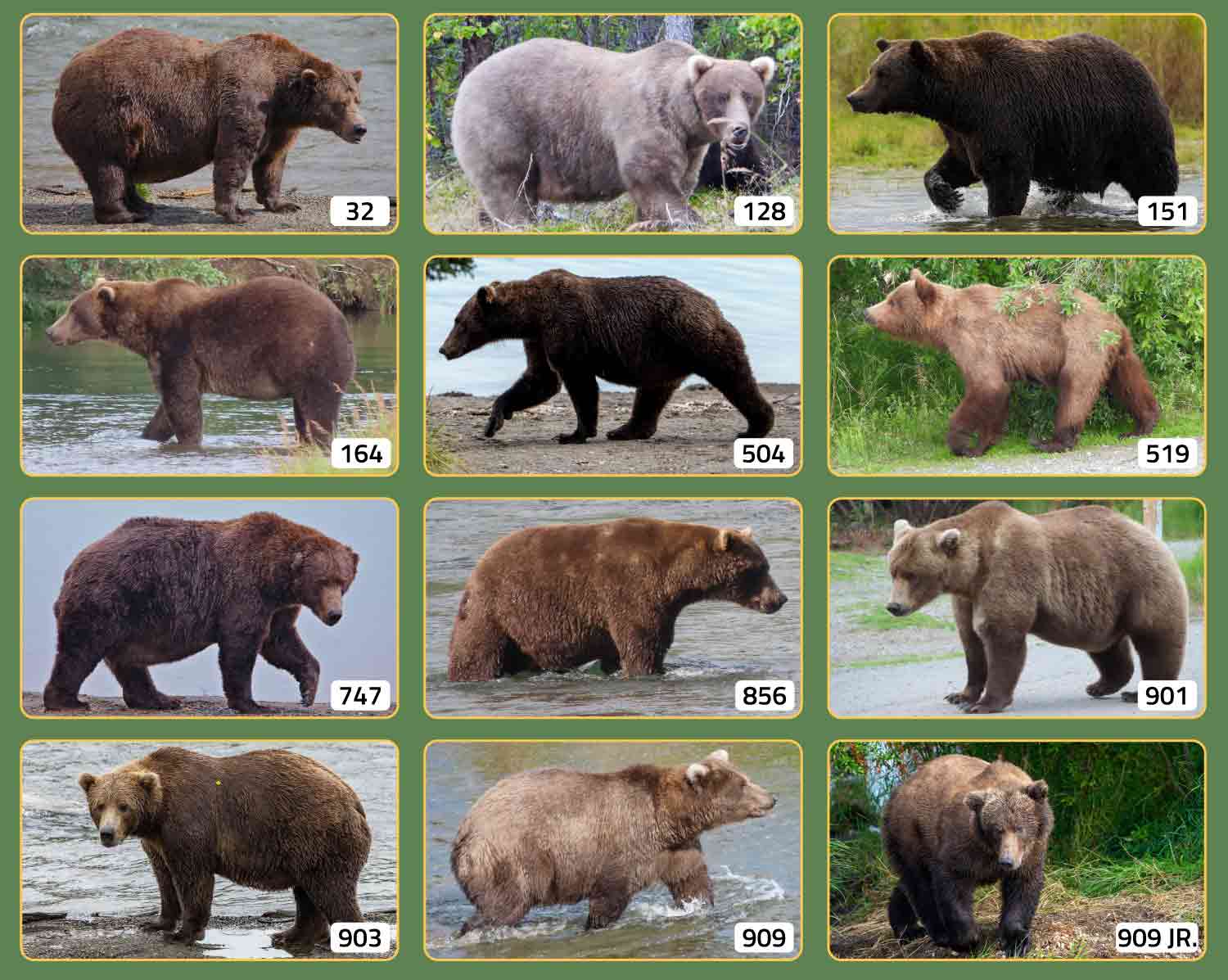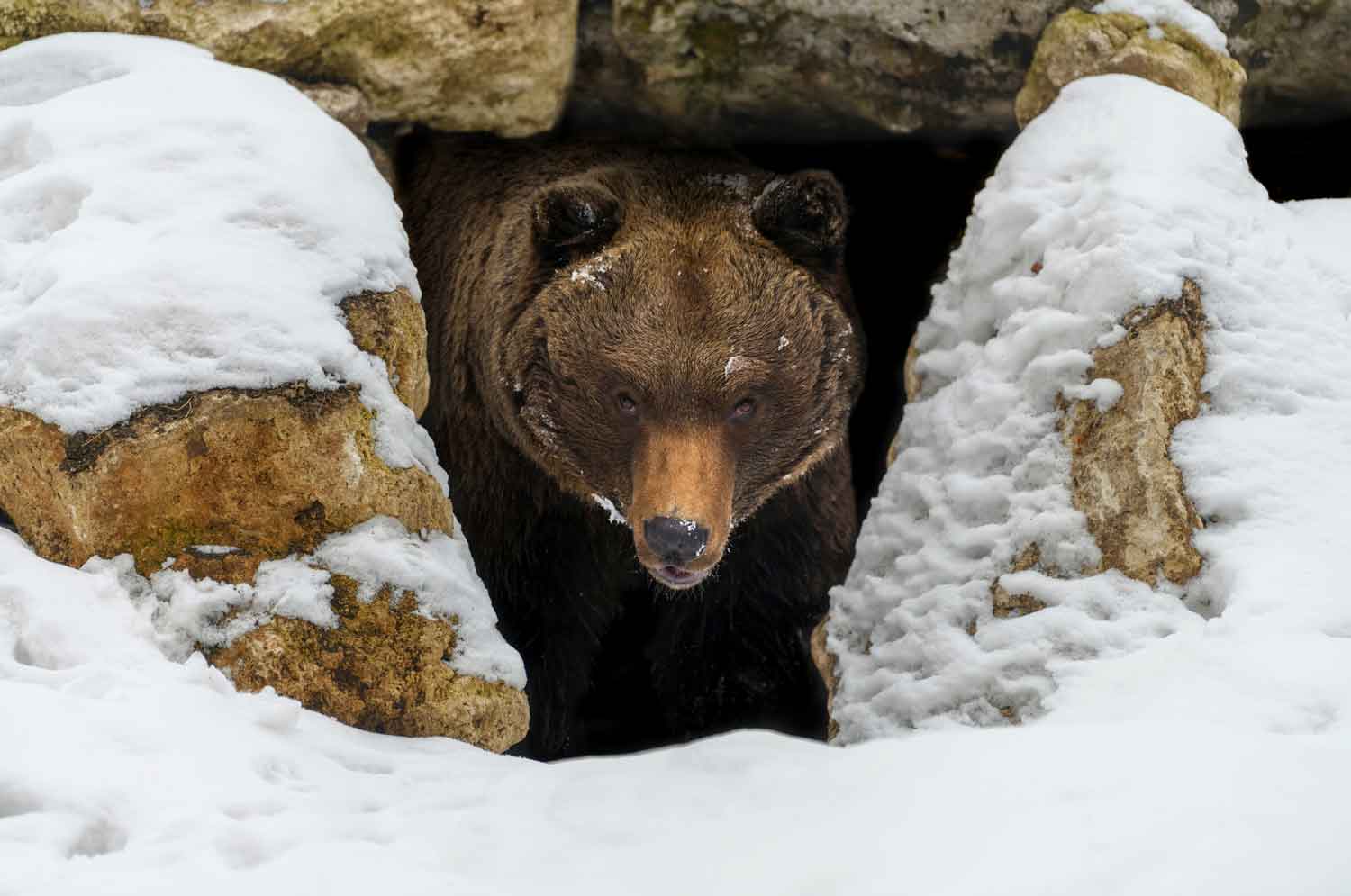An Ingenious Invention
Sirish Subash, 14, won the 3M Young Scientist Challenge after developing an invention we can all use.
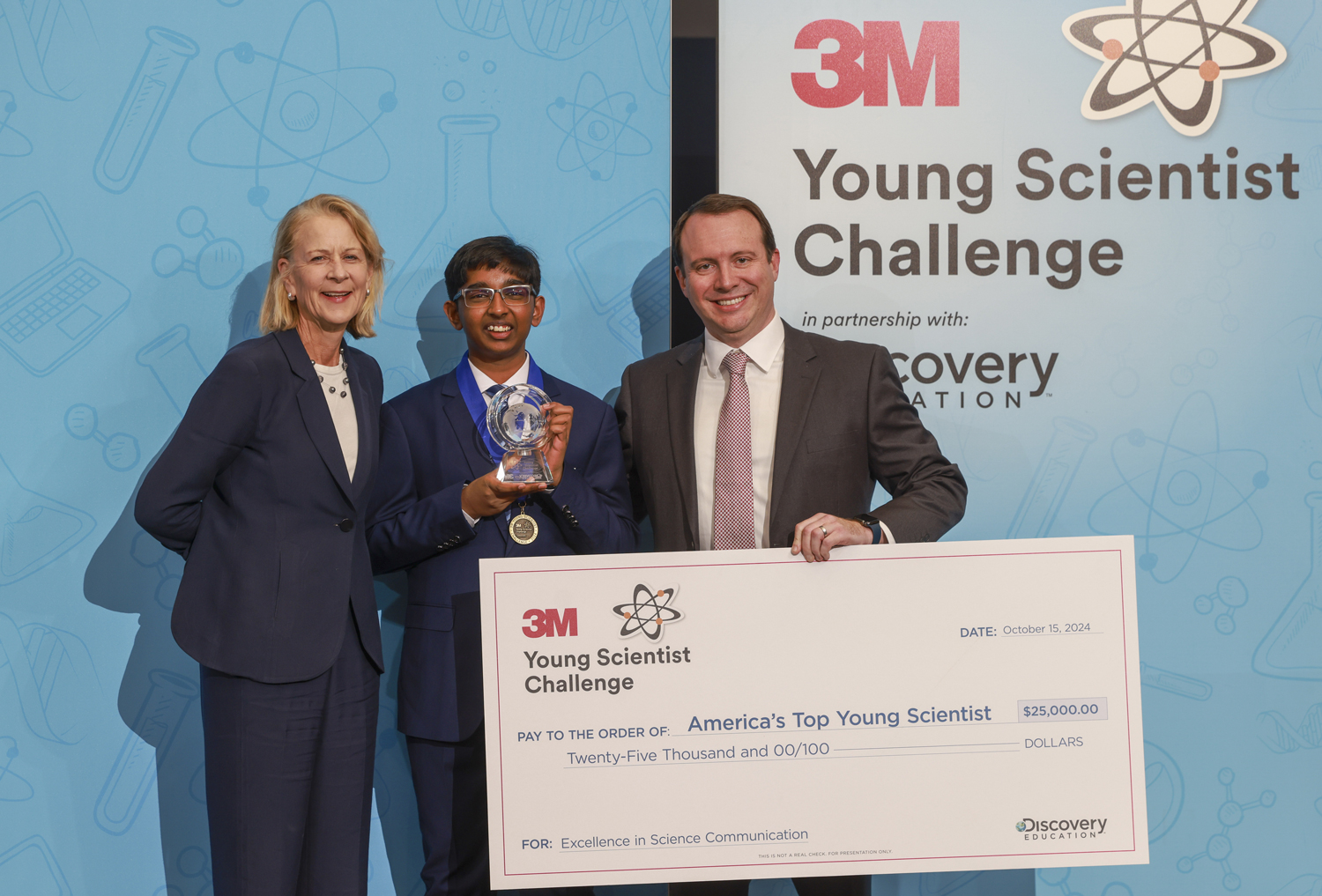
Photographer: Andy King 2024, courtesy of Discovery Education 2024
Sirish Subash (center) with Discovery Education CEO Brian Shaw and 3M Executive Vice President and Chief Public Affairs Officer Torie Clarke after winning the 3M Young Scientist Challenge.
When 14-year-old Sirish Subash’s mom kept insisting that he wash fruit before eating it to remove pesticides, he wondered if washing produce is really very effective. Hoping to find out, he ended up inventing a helpful device.
“My [invention] is called PestiSCAND,” Sirish told USA Today. “[It’s a] device that allows everybody to check for pesticide residues on their produce at home. The pesticide residue [is] a contaminant that’s commonly found on produce items.”
Sirish’s ingenuity paid off. The 9th grader from Georgia recently took home the top prize at the 2024 3M Young Scientist Challenge, an annual competition for middle school students.
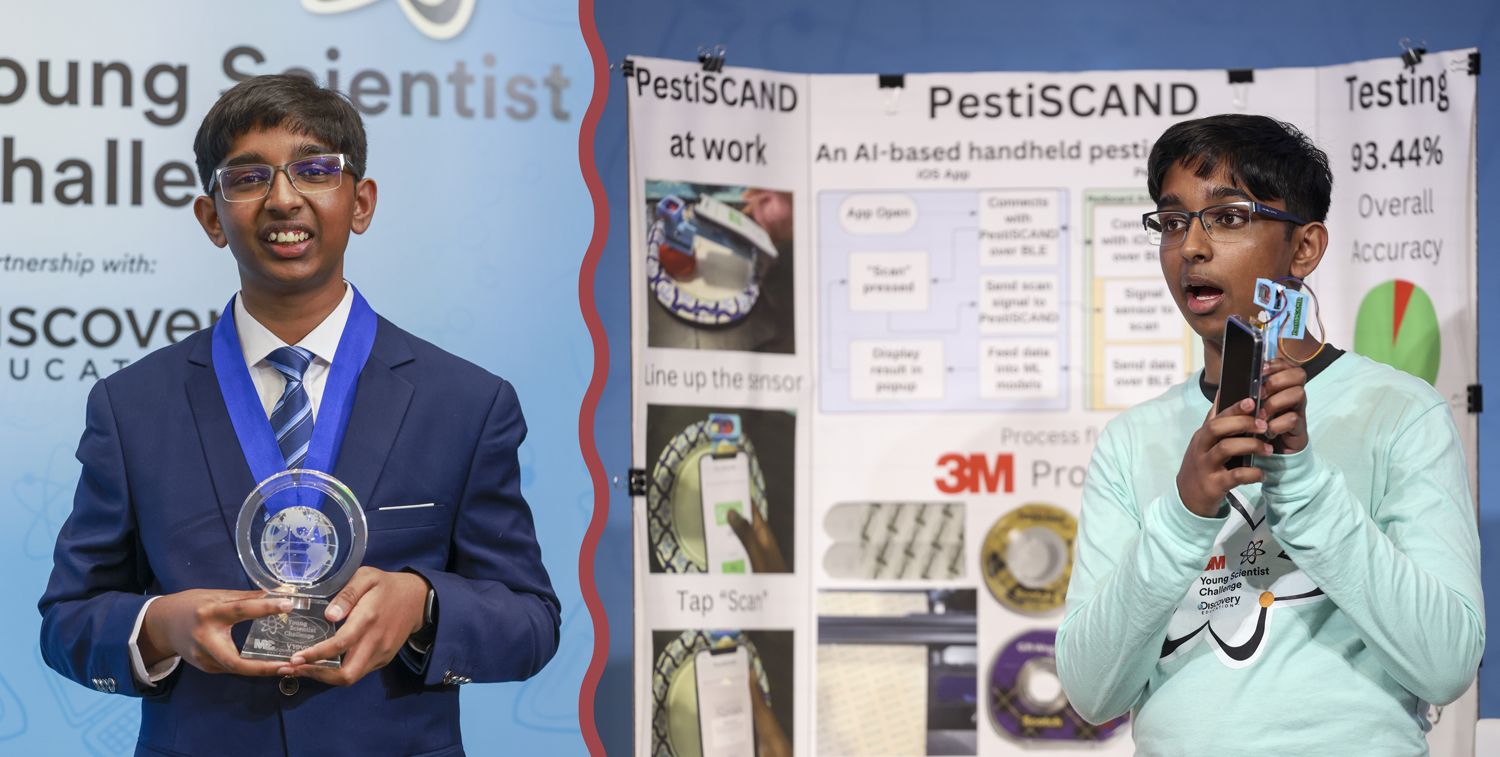
Photographer: Andy King 2024, courtesy of Discovery Education 2024
Sirish Subash poses with his award (left) and presents his invention, PestiSCAND.
According to the Food and Drug Administration (FDA), a large majority of produce in the United States contains pesticide residues. Ingesting pesticides is linked to a higher risk of Alzheimer’s disease, Parkinson’s disease, and certain forms of cancer.
“If we could detect [pesticides], we could avoid consuming them and reduce the risk of those health issues,” Sirish said.
PestiSCAND measures the light reflected off the surface of produce and then uses artificial intelligence (AI) to analyze the light waves and determine if pesticides are present. In his entry video, Sirish explained that certain wavelengths of light are reflected by pesticides. Sirish says PestiSCAND is more than 85 percent accurate.
The 3M Young Scientist Challenge is open to U.S. students in grades 5 to 8 (it’s okay if entrants go into 9th grade during the challenge). Ten contest finalists get to take part in a summer program, during which they improve their inventions with guidance from 3M scientists.
As the winner of the Challenge, Sirish will receive $25,000. He continues to make improvements to PestiSCAND and hopes that eventually, he’ll be able to sell it to the public for about $20.
Did You Know?
Organic food is grown using no synthetic pesticides. Currently only about 2 percent of the world’s farmland is used to grow food organically—but organic farming is on the rise.

© Fethi Belaid—AFP/Getty Images
Women harvest cucurbitas (a type of gourd) on an organic farm in Oudhna, Tunisia.
Do You Accept the Challenge?
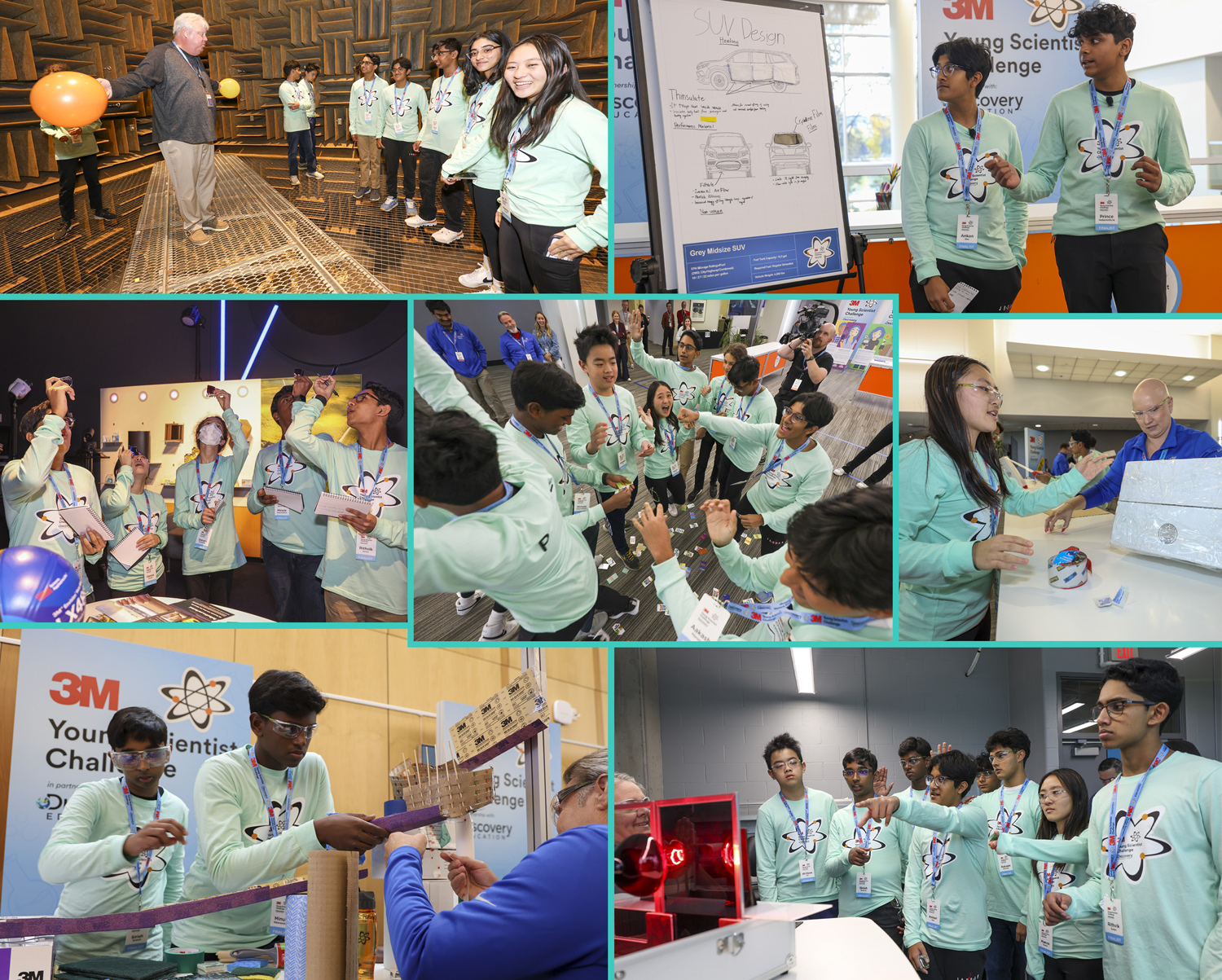
Photographer: Andy King 2024, courtesy of Discovery Education 2024; Photo composite Encyclopædia Britannica, Inc.
In these photos, the 2024 3M Young Scientist Challenge finalists learn from and work with mentors.
Do you have an idea for an invention that will solve a problem? The 3M Young Scientist Challenge is open to U.S. residents in grades 5 through 8. Entry topic areas include robotics, home improvement, automotive, safety, augmented reality/virtual reality, and climate technology.
To enter, students must submit a short video explaining their solution. Then, with permission from a parent or guardian, they can upload the video to the 3M Young Scientist Challenge registration page. According to 3M, videos are judged on creativity, scientific knowledge, effective communication, and overall presentation. They’re not judged on production or digital effects.
A panel of scientists and other judges will select 10 finalists. With help from a mentor, finalists will have the opportunity to make their vision a reality by producing a prototype.
3M began accepting submissions for the 2024 Challenge in January 2024. Finalists were selected in June, and the winner was announced in October. Check out the 3M website for more details on next year’s competition!
Galileo’s Science Class
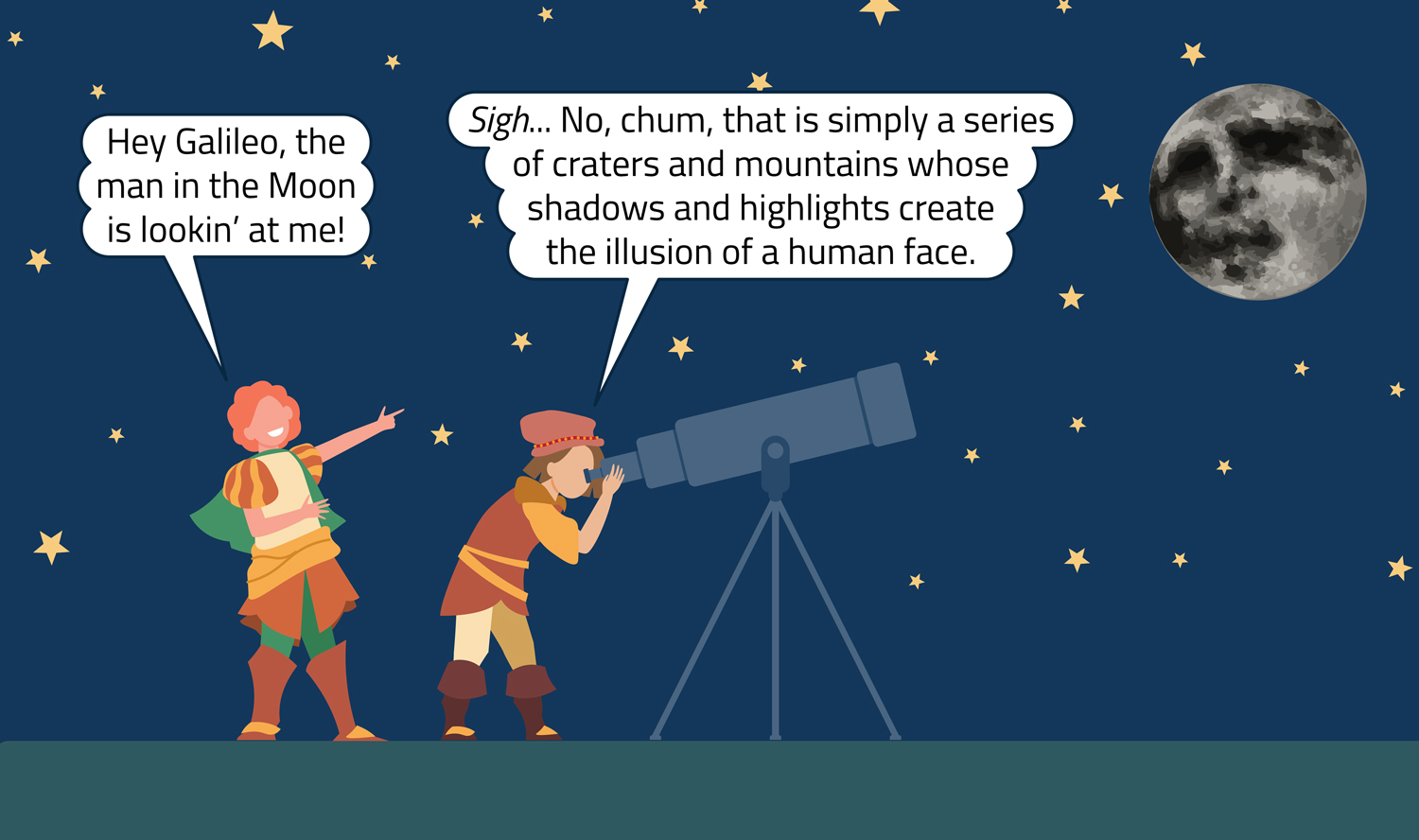
© PCH-Vector—iStock/Getty Images Plus, © Roman Egorov/Dreamstime.com; Illustration composite Encyclopædia Britannica, Inc.
Did you know that many well-known scientists made some of their most important discoveries at a young age?
Galileo Galilei, aka Galileo, who’s known for arguing that Earth travels around the Sun, made some of his first scientific breakthroughs while still a teenager. You can read more about Galileo at Britannica.
WORD OF THE DAY
epiphany
noun
: a moment in which you suddenly see or understand something in a new or very clear way

Word Search
All the words in this puzzle are related to invention. Can you find them?



